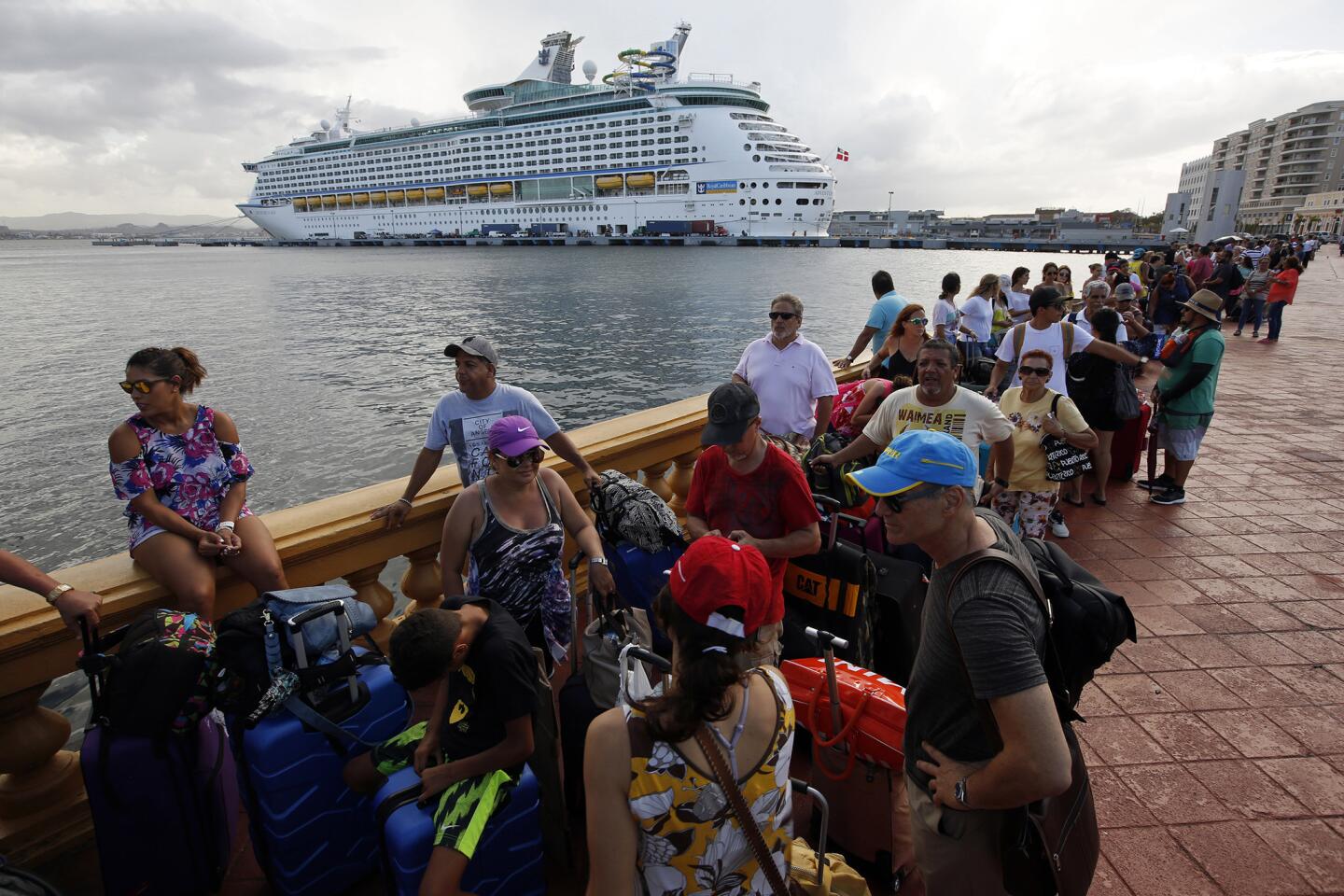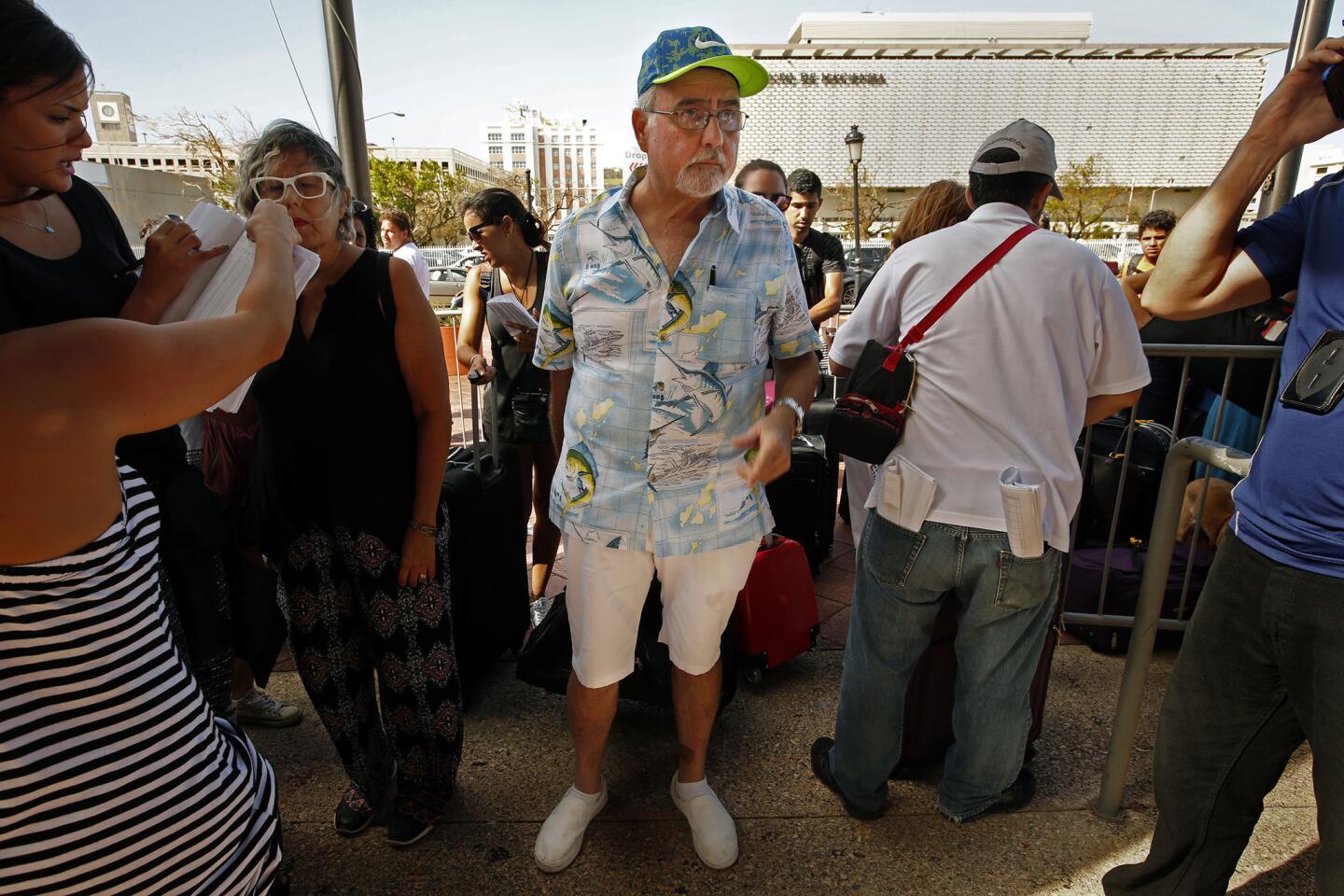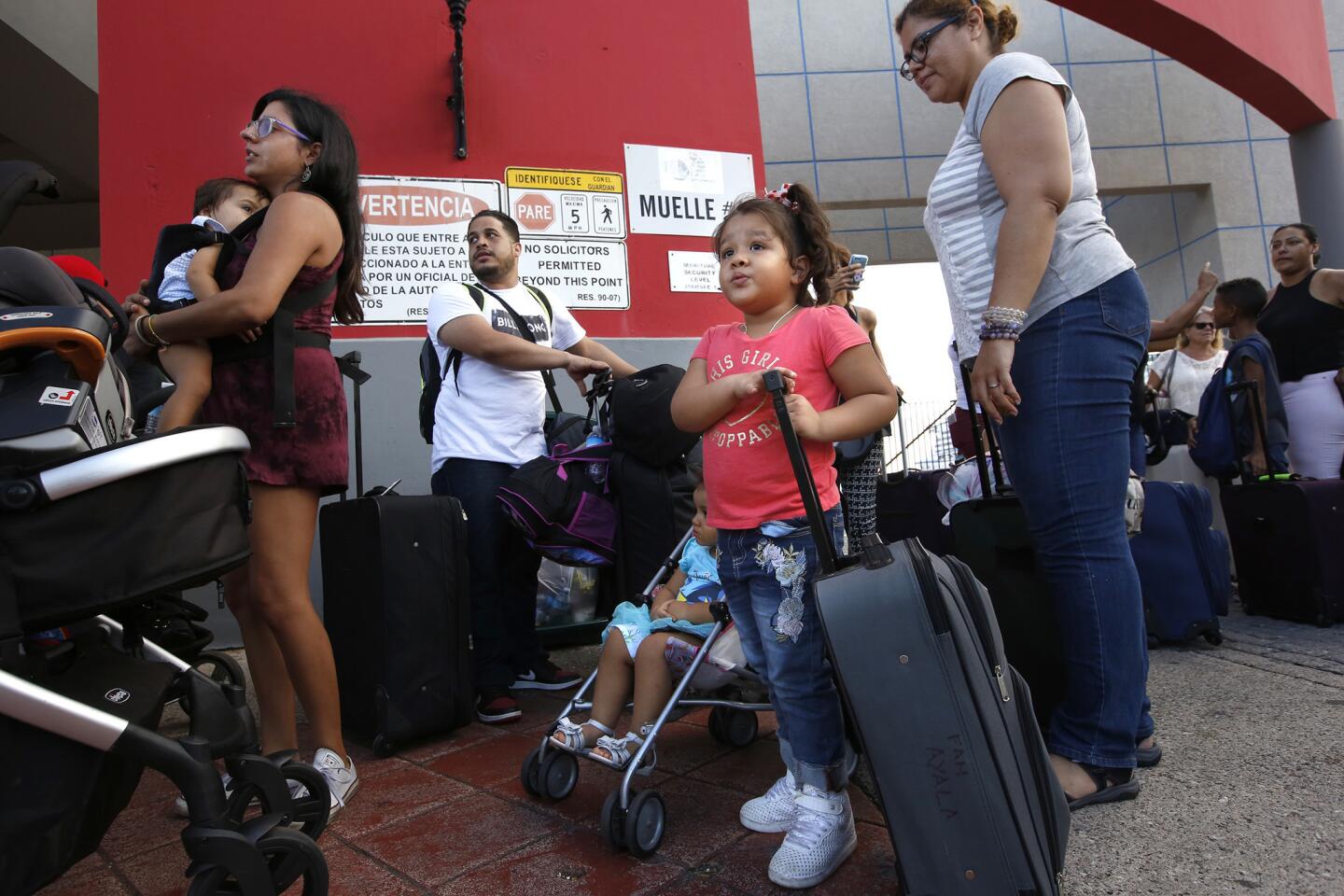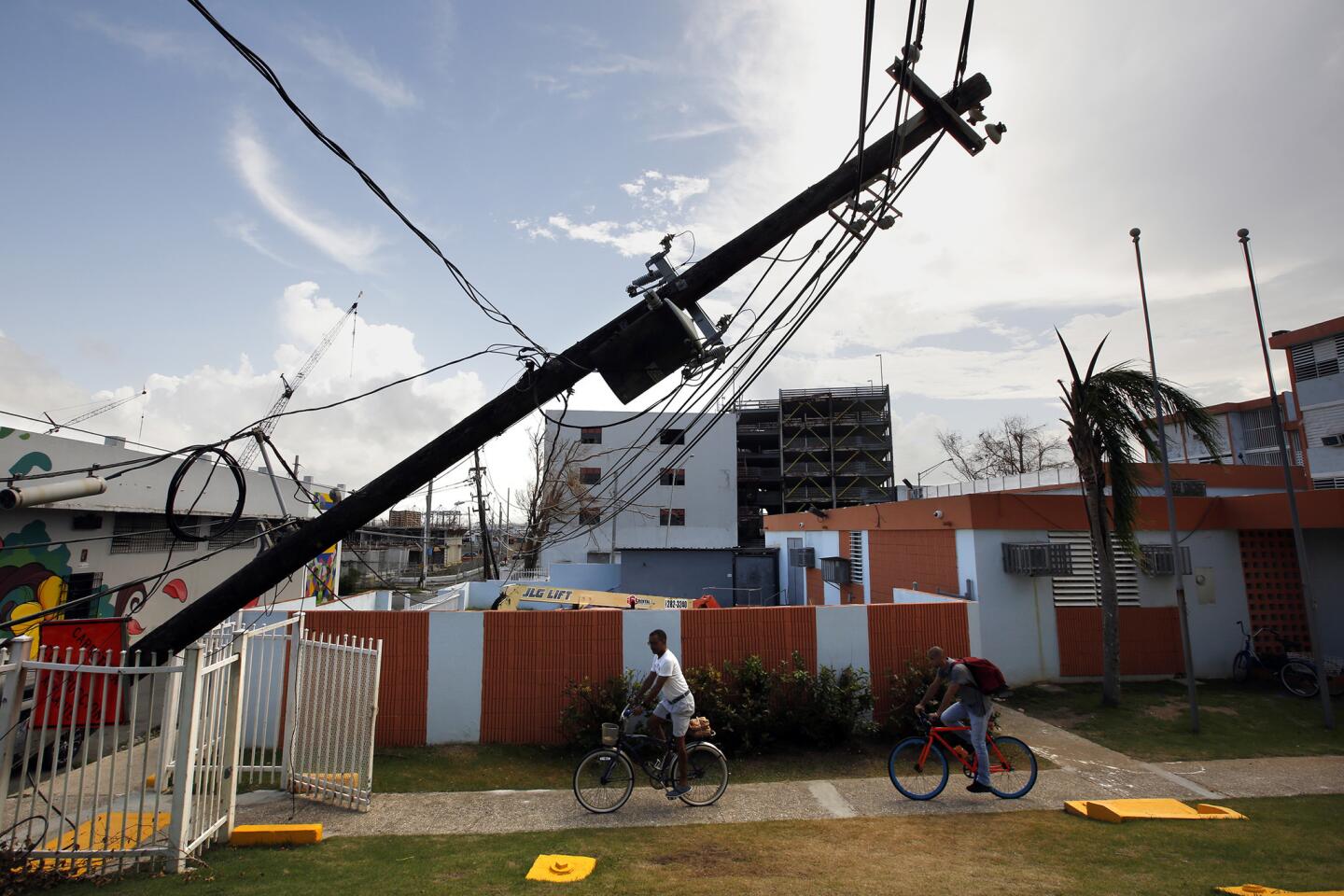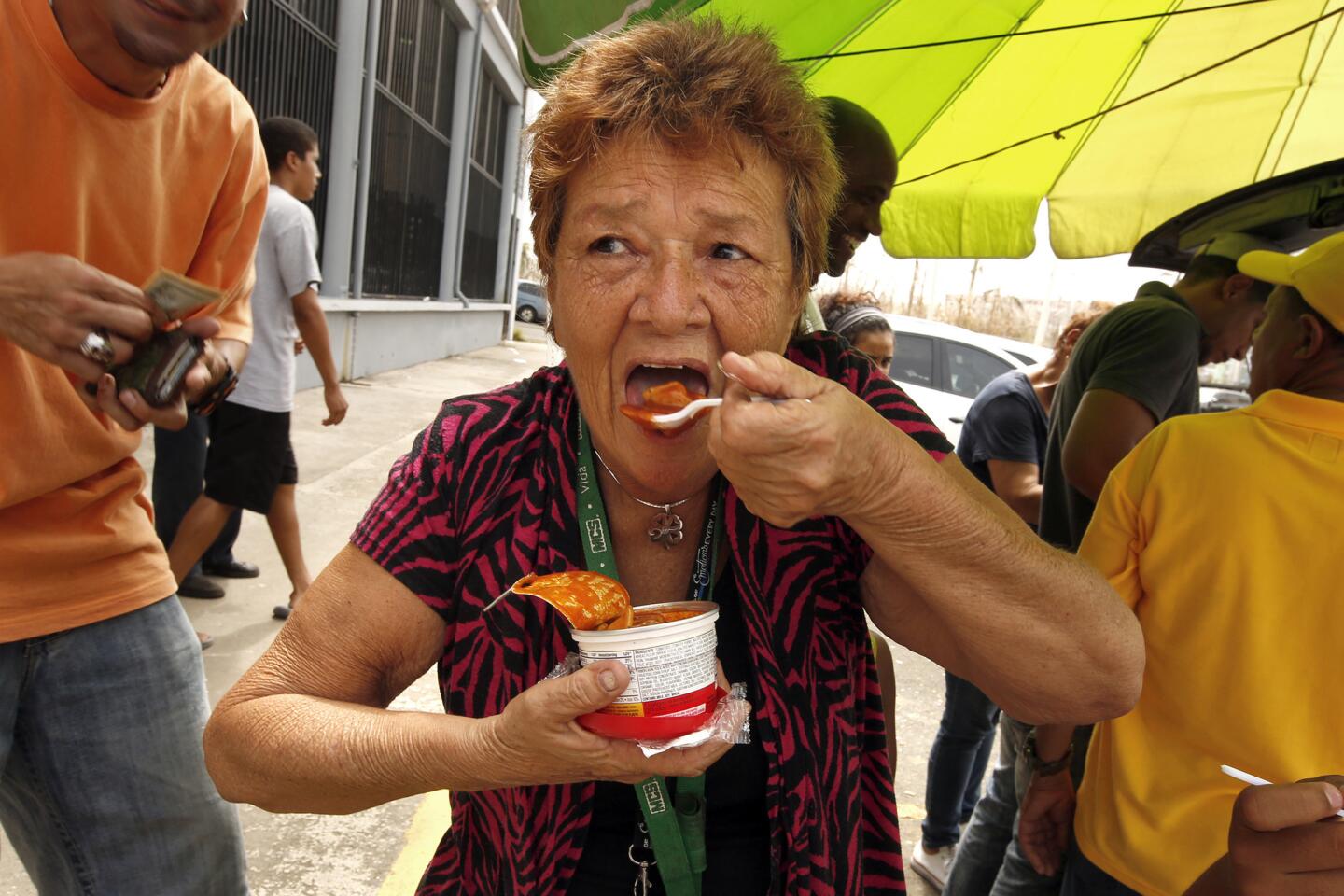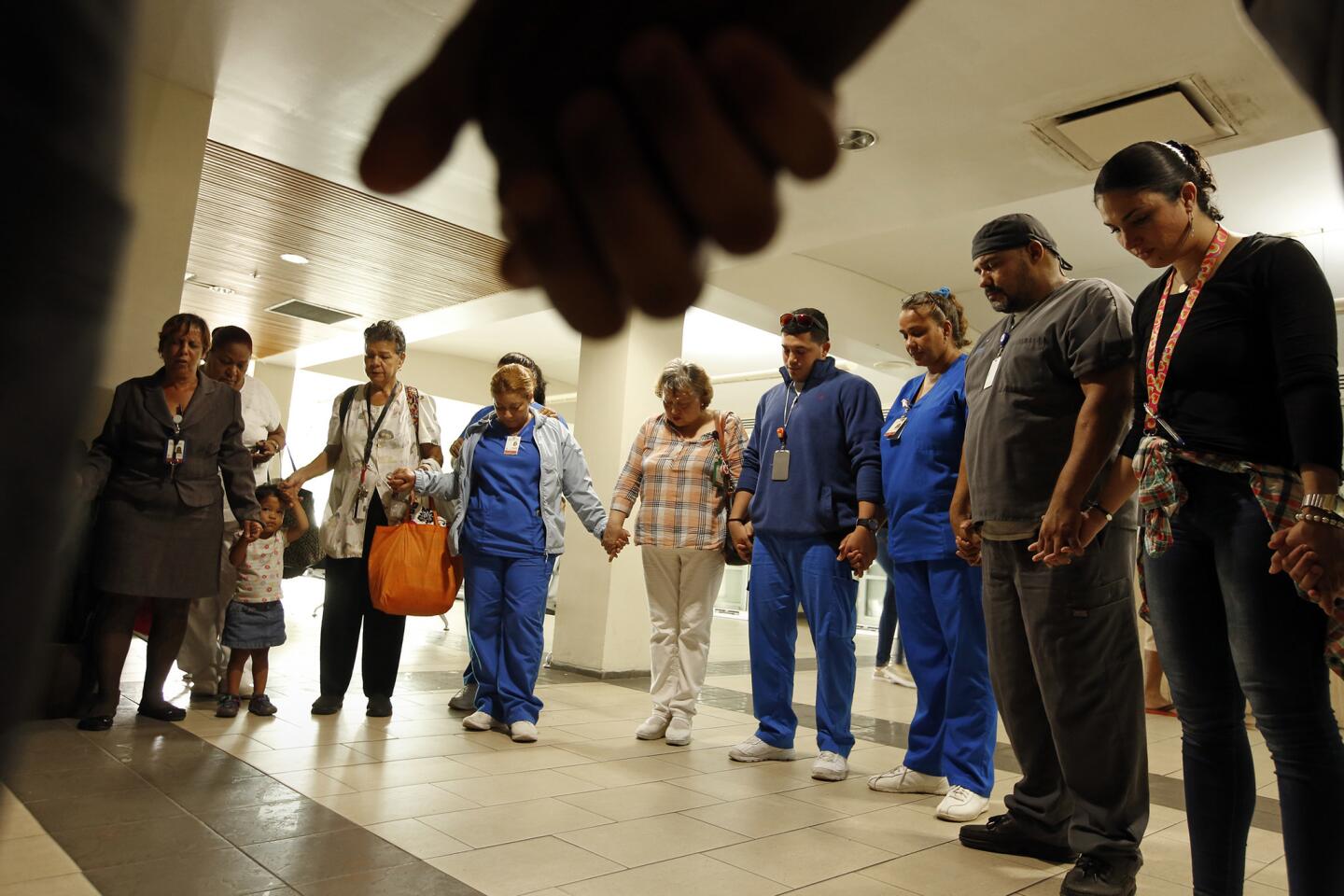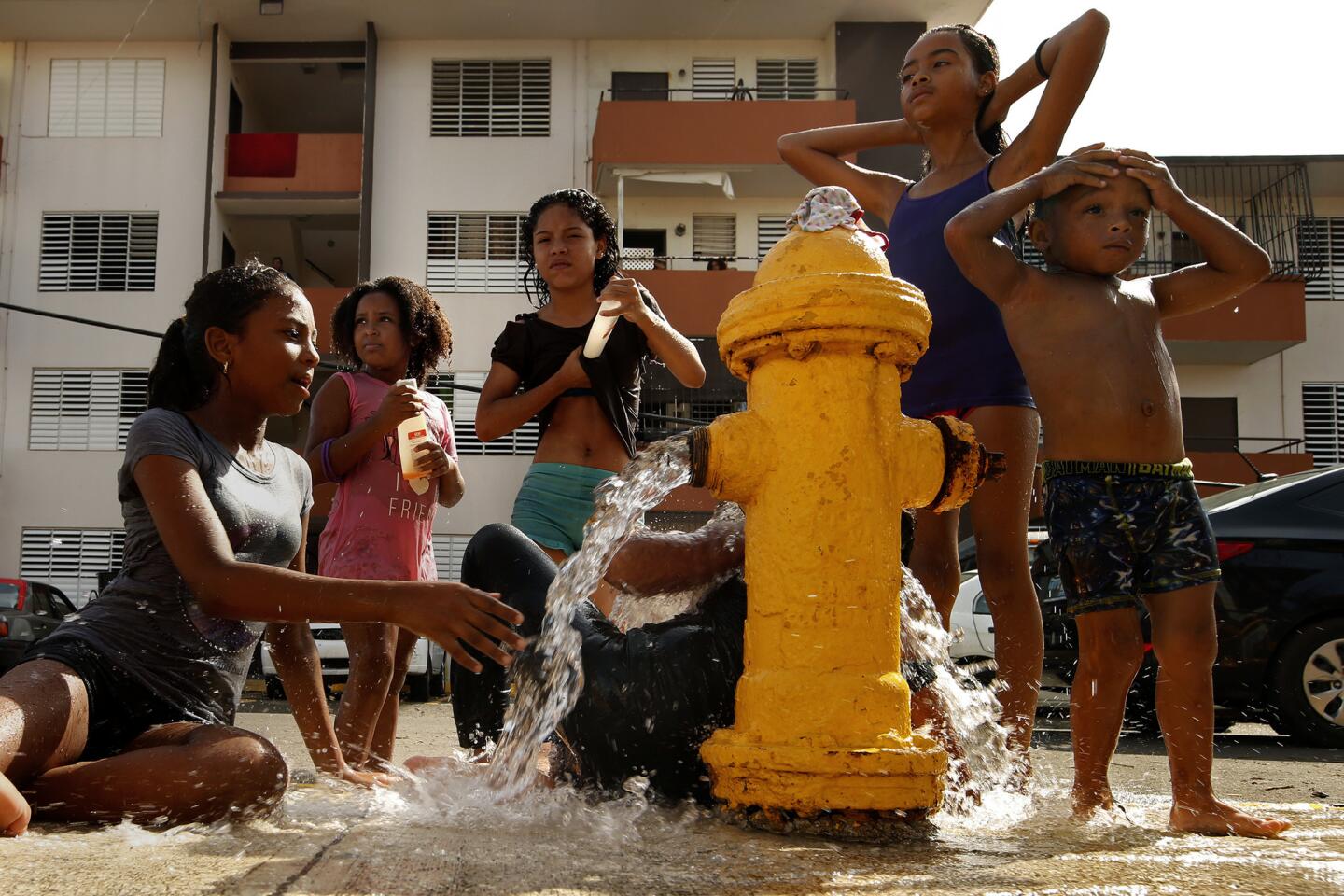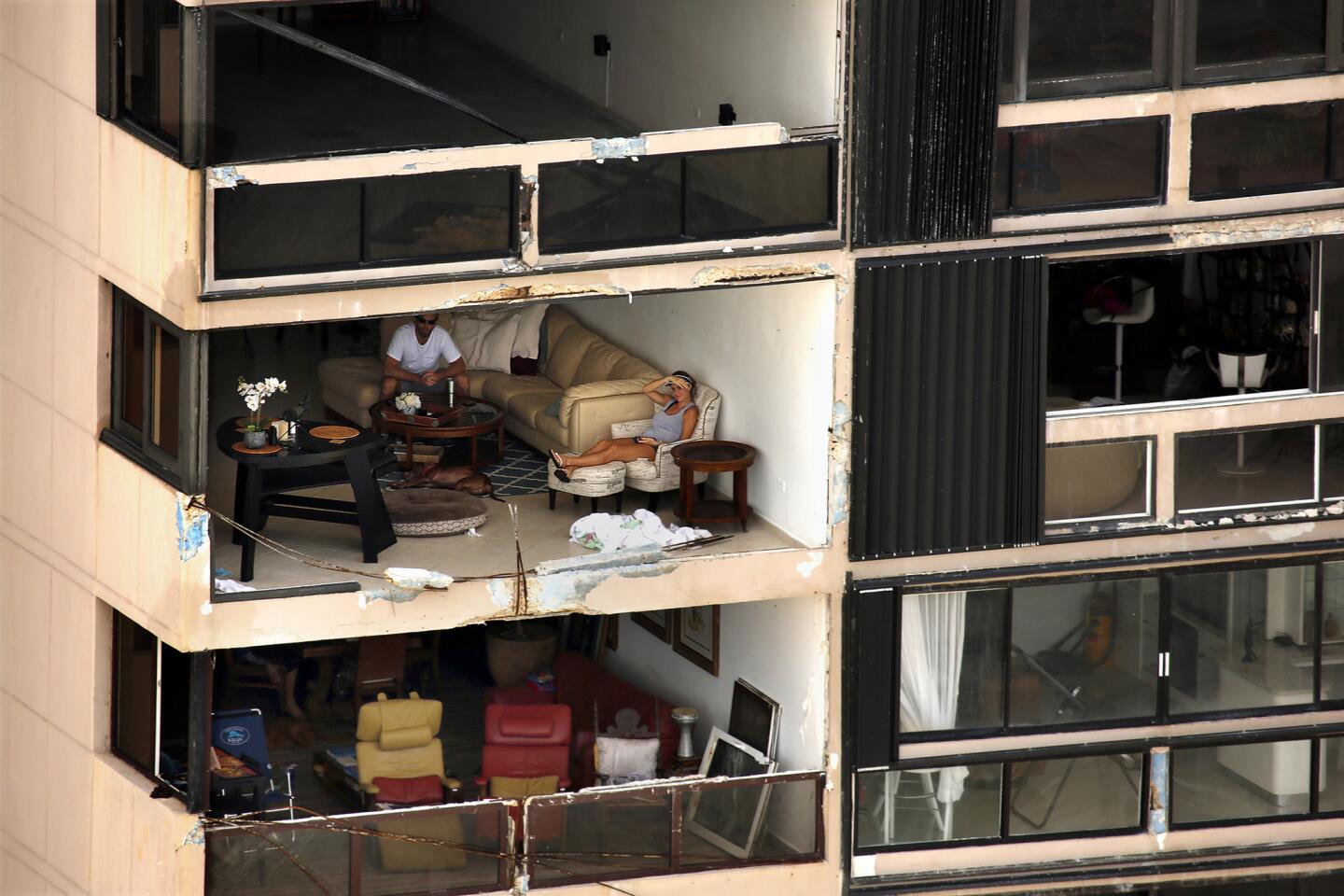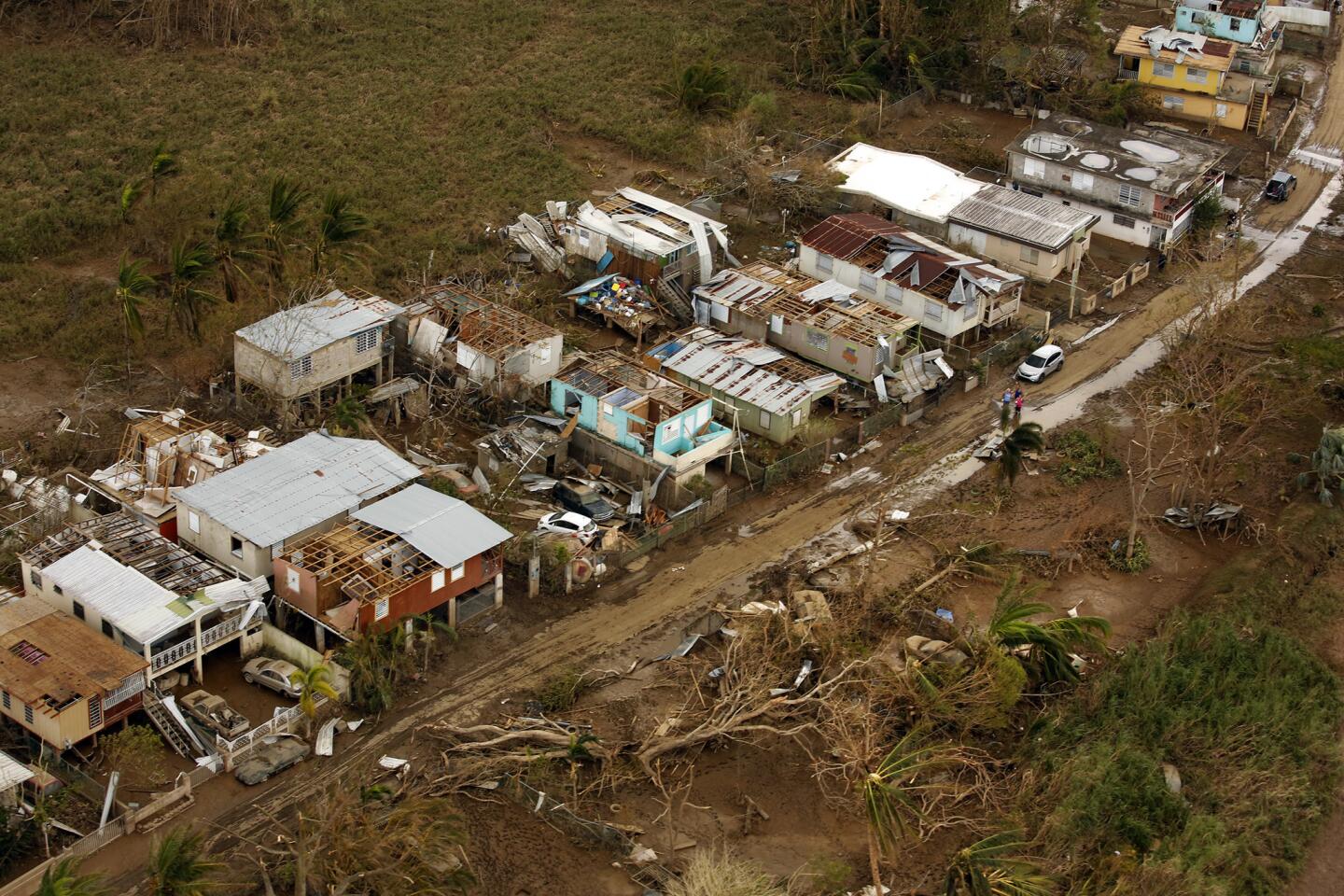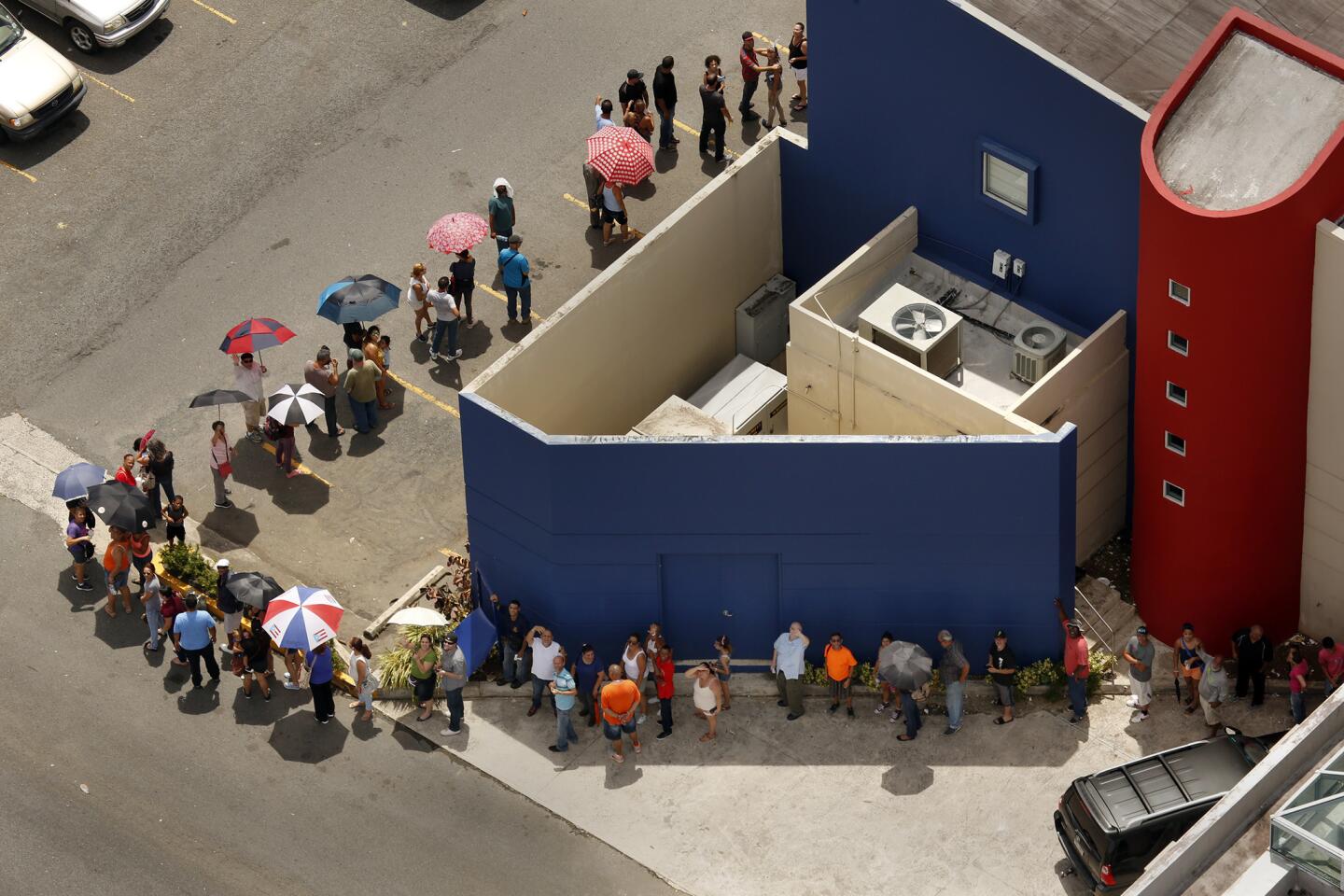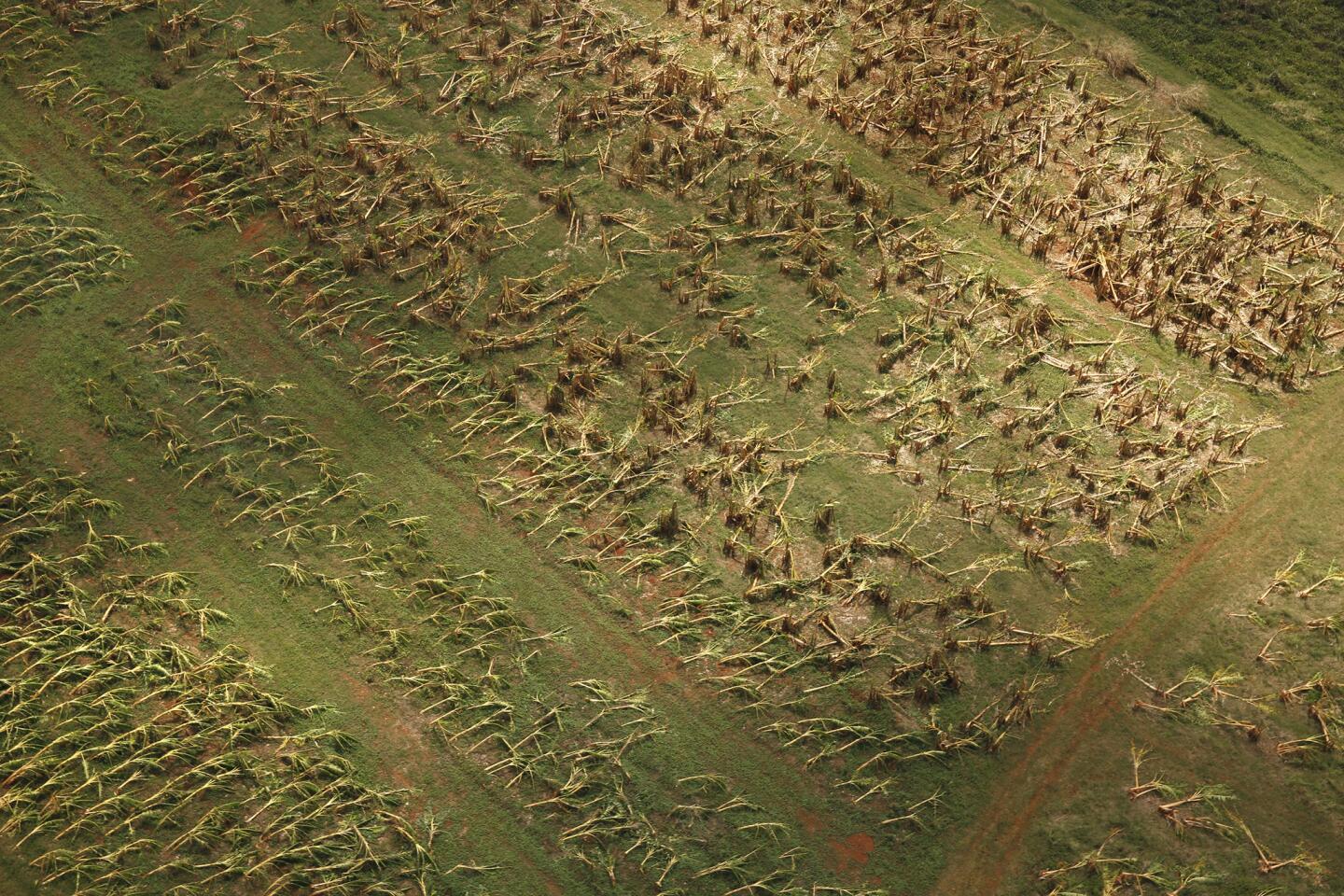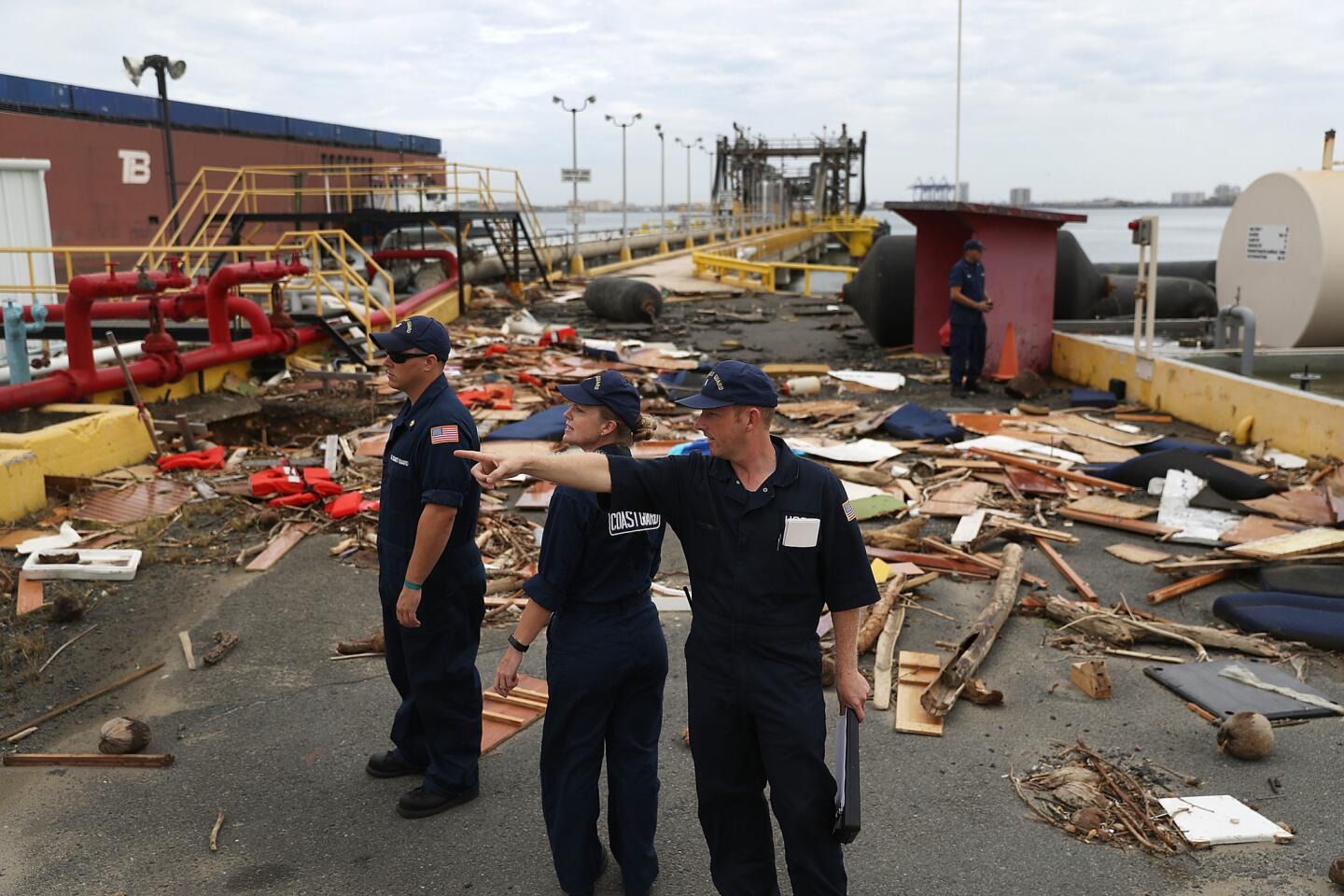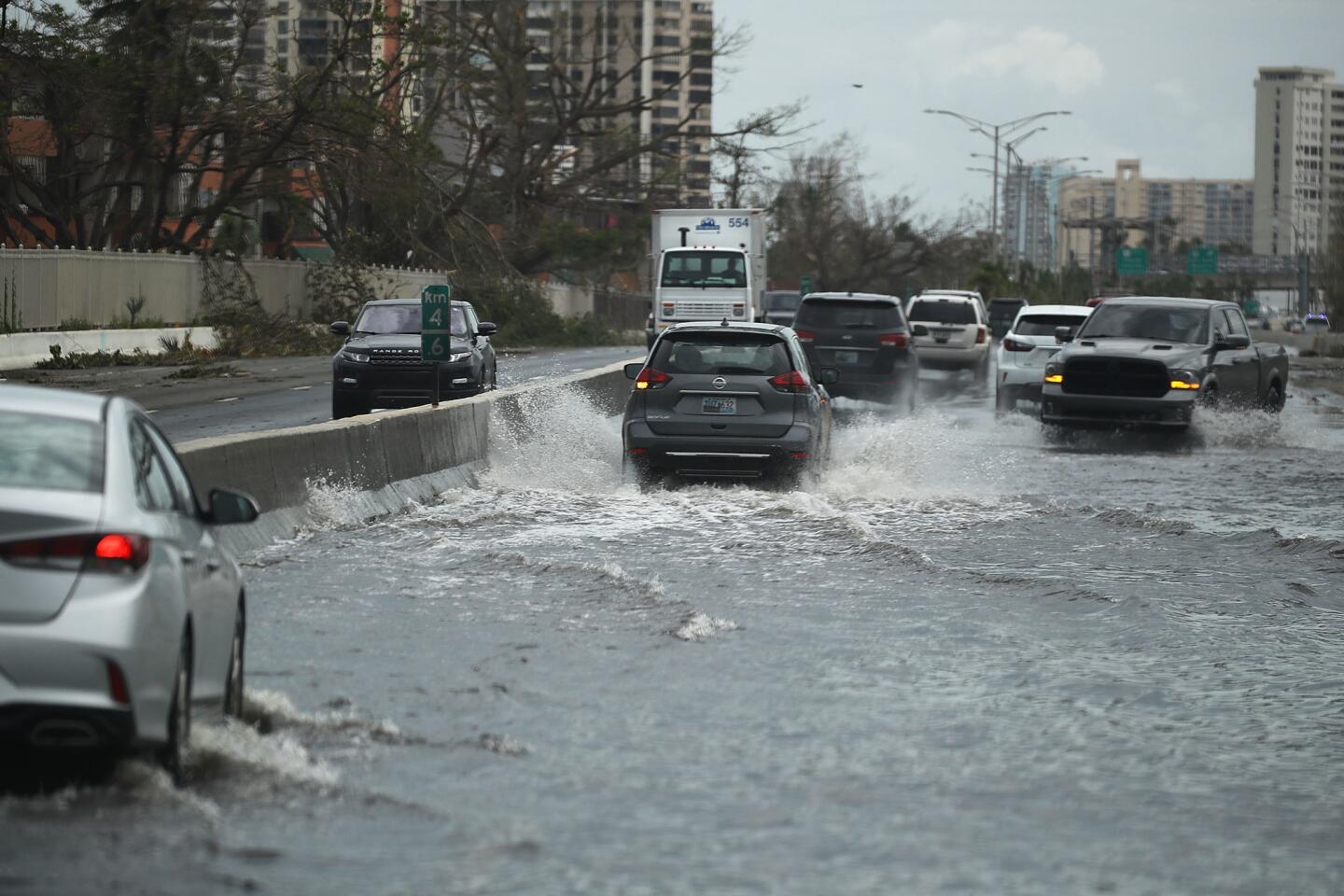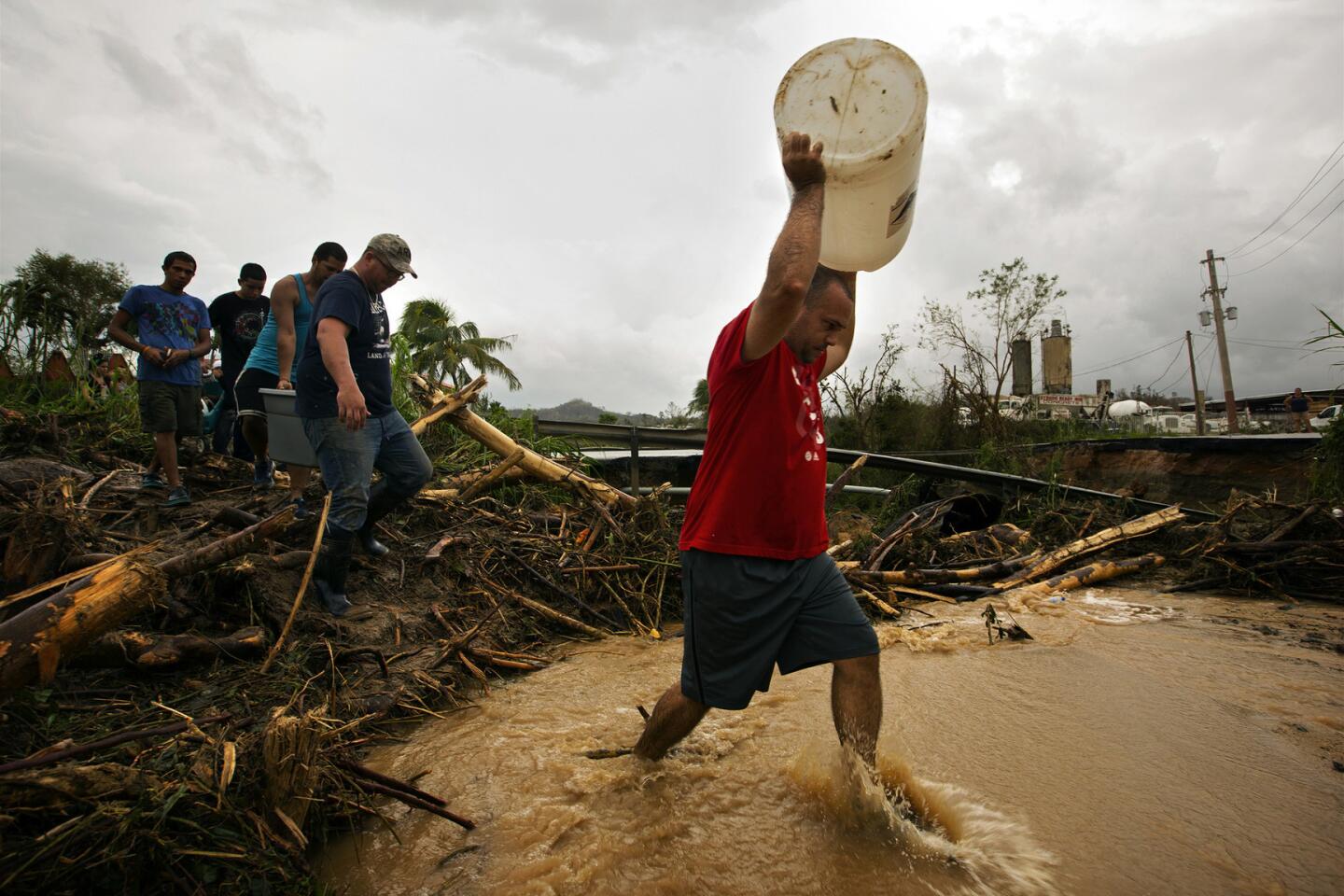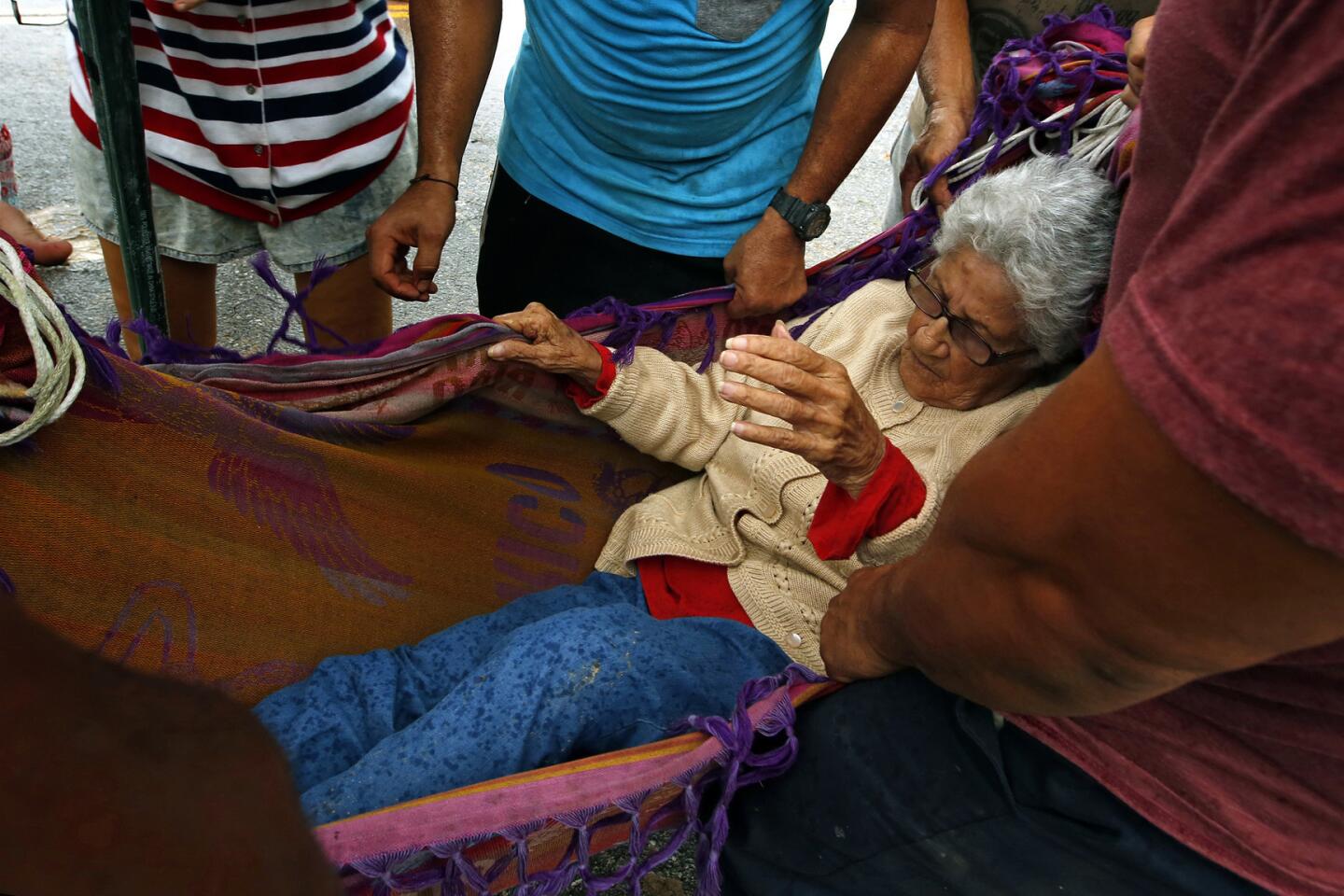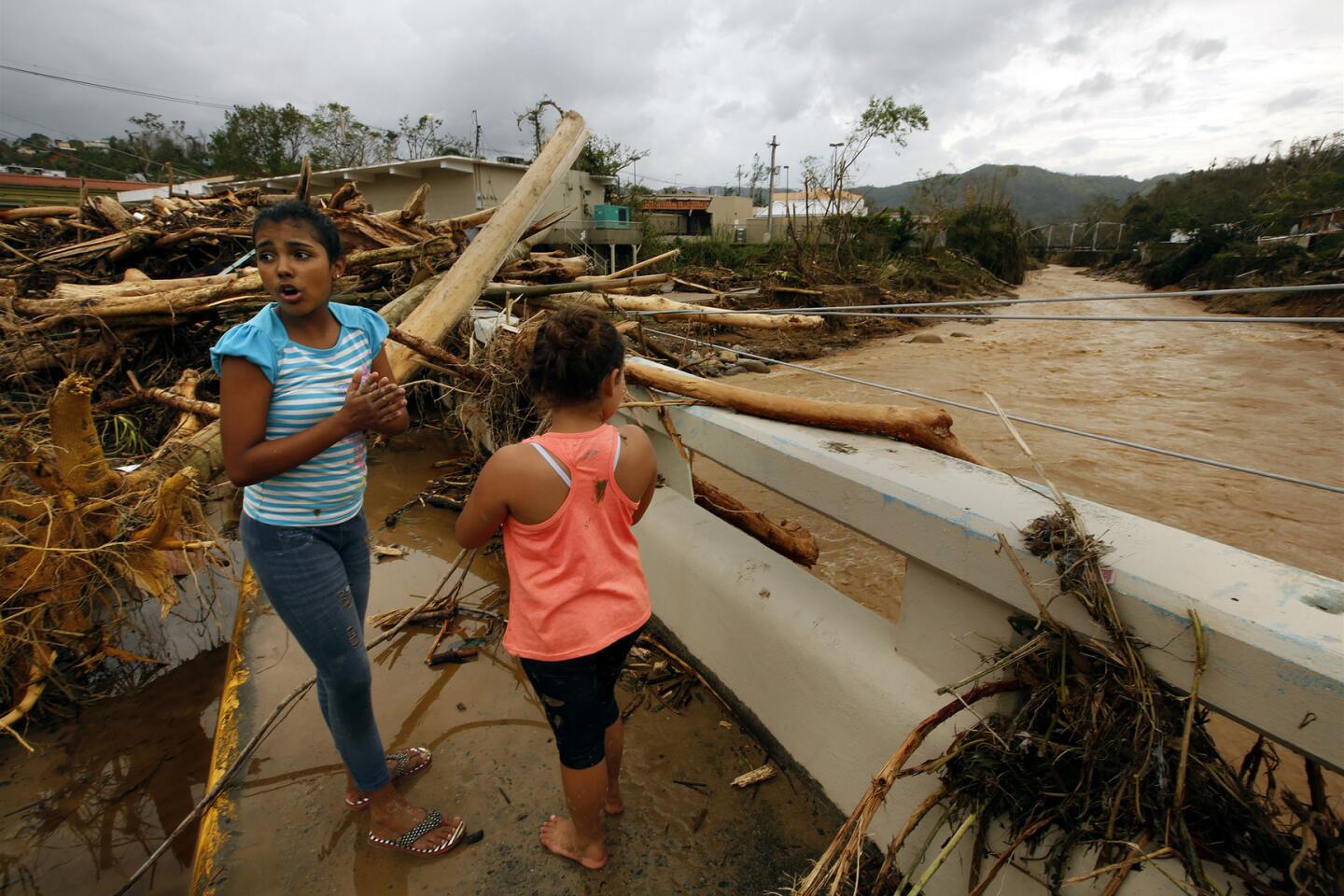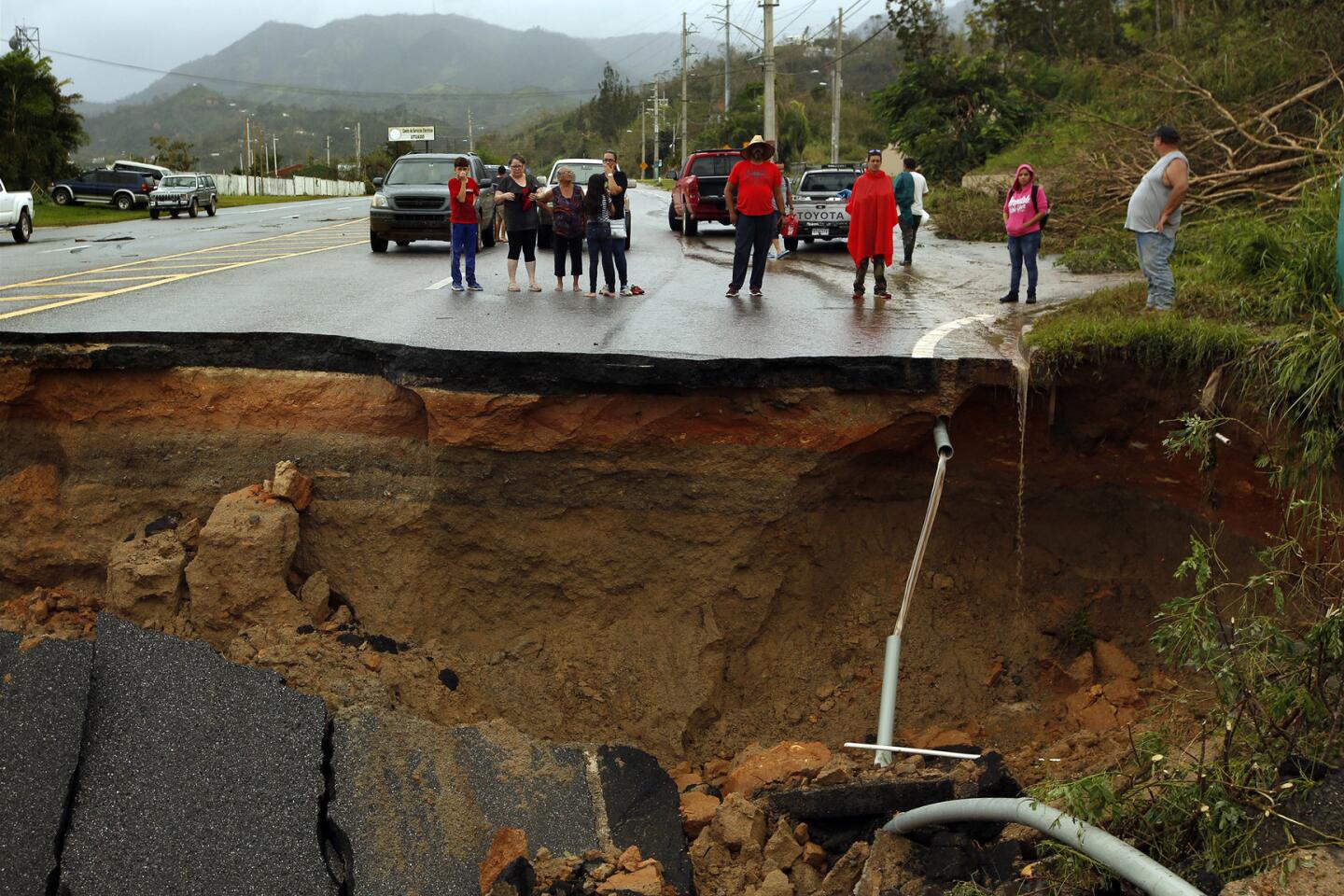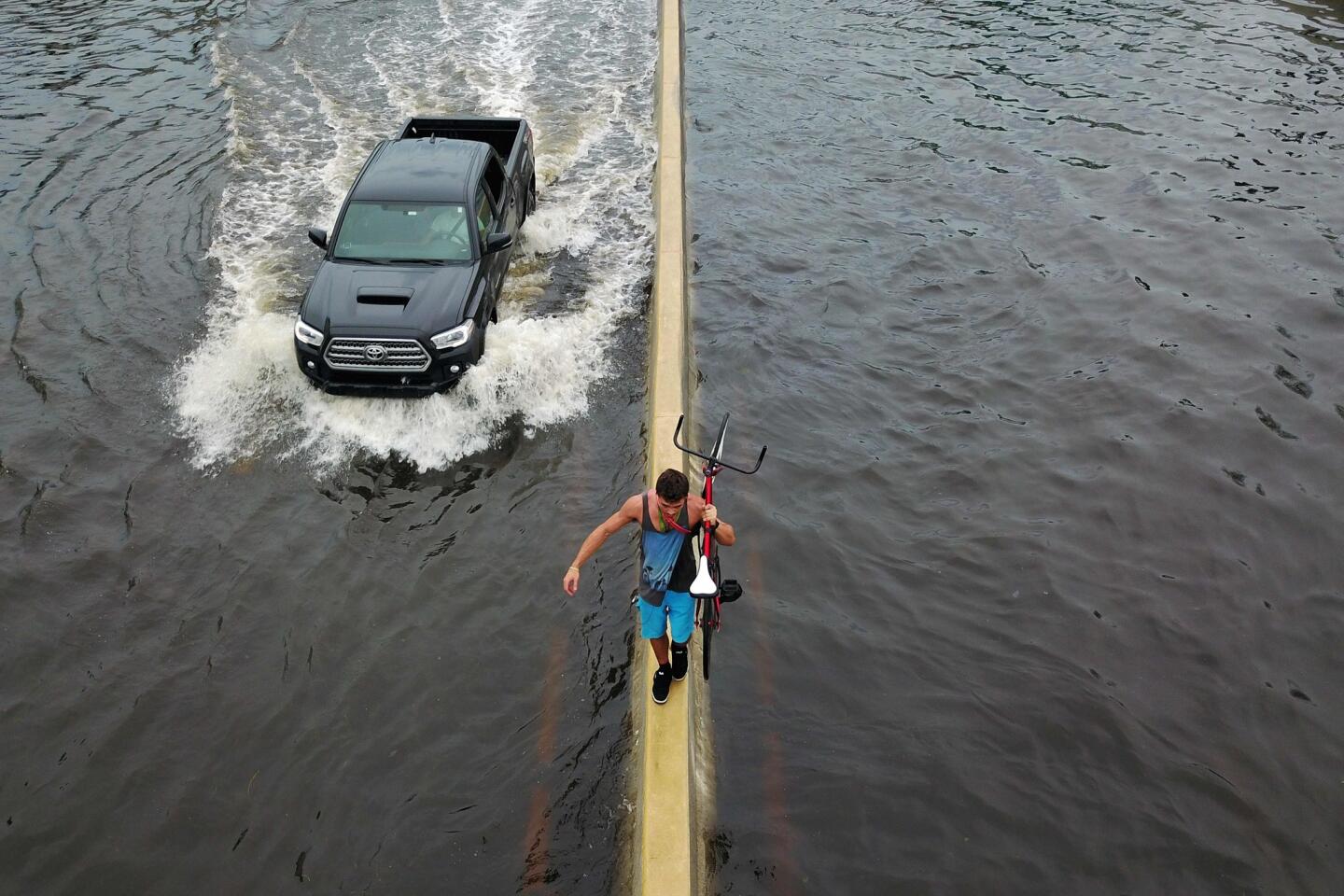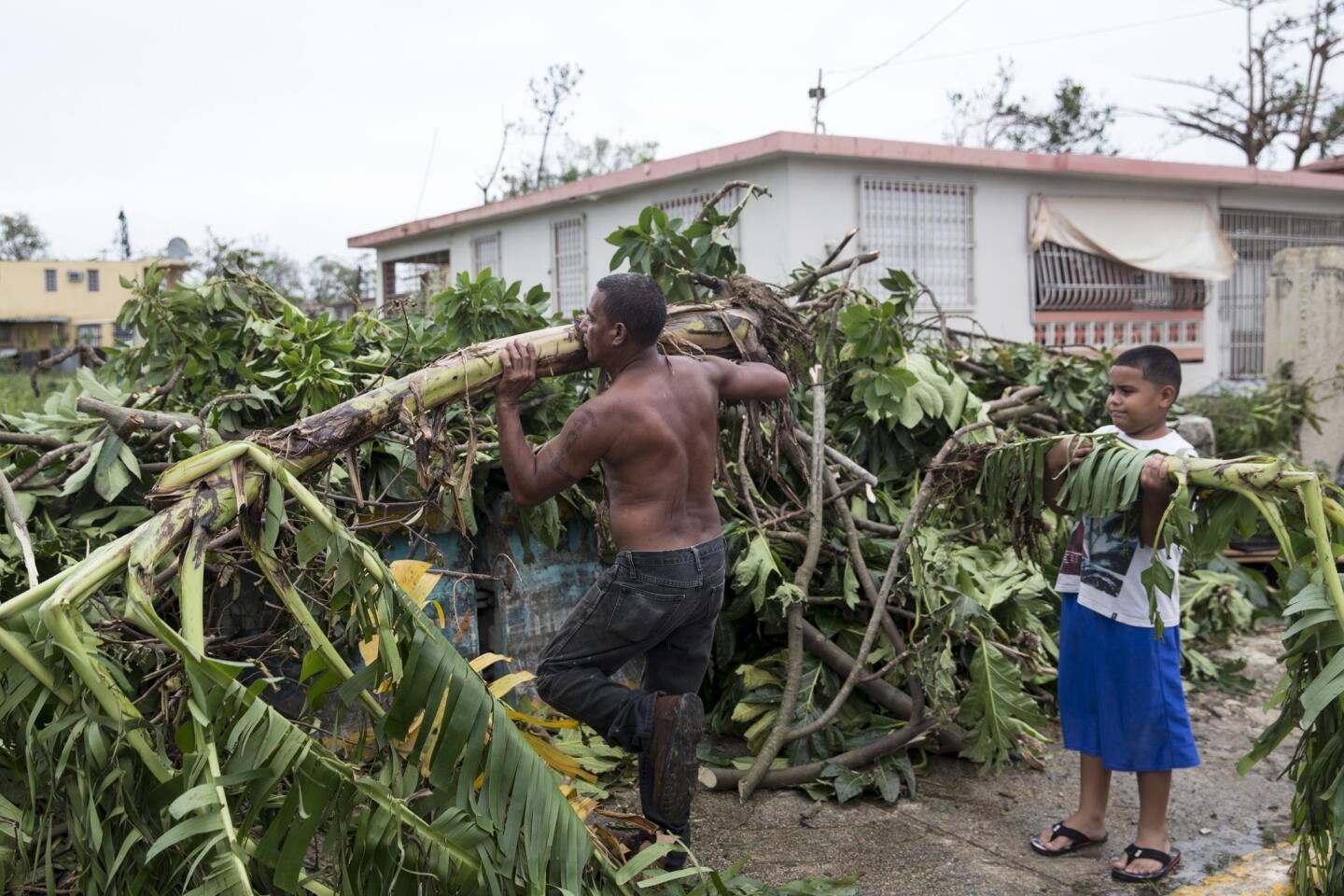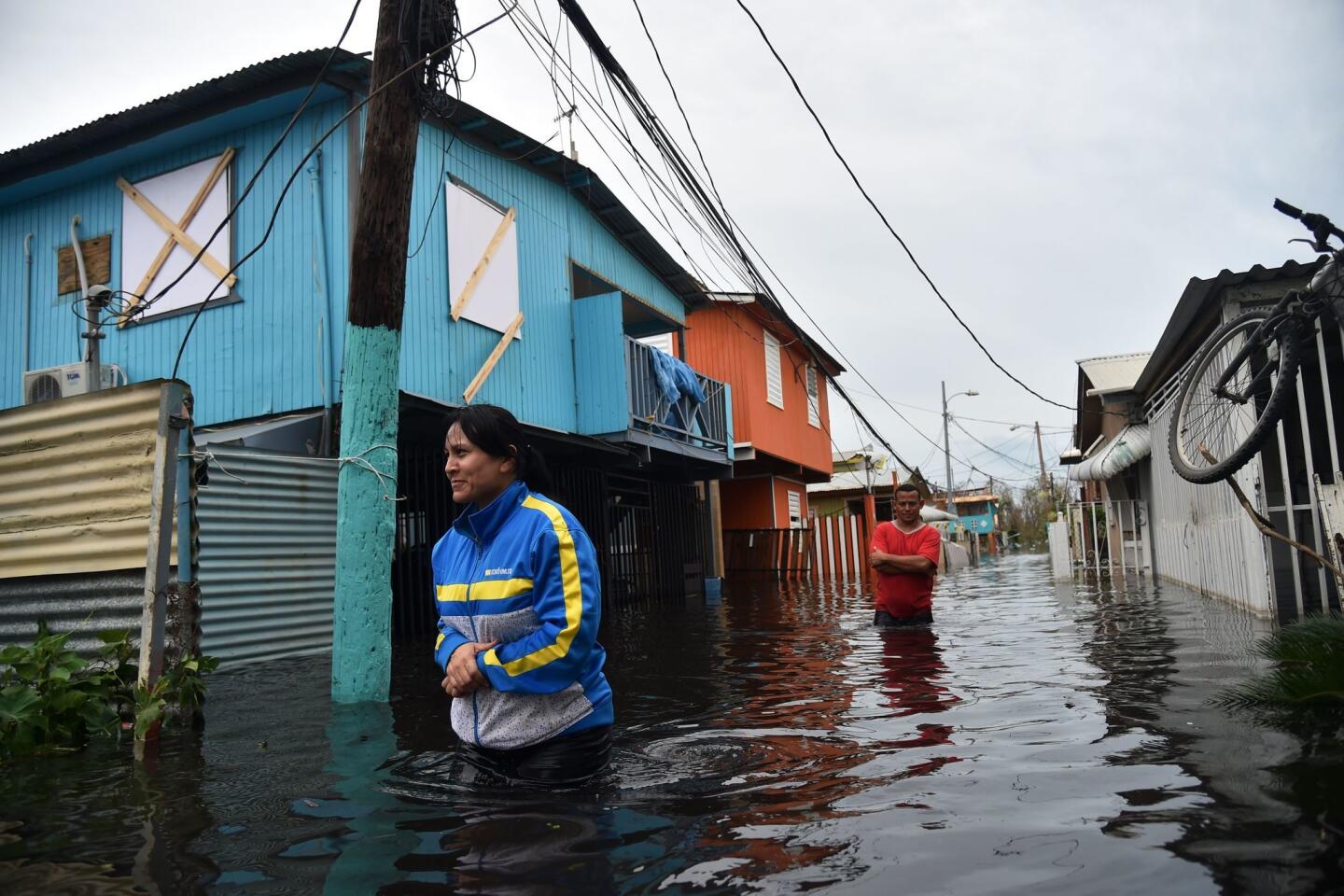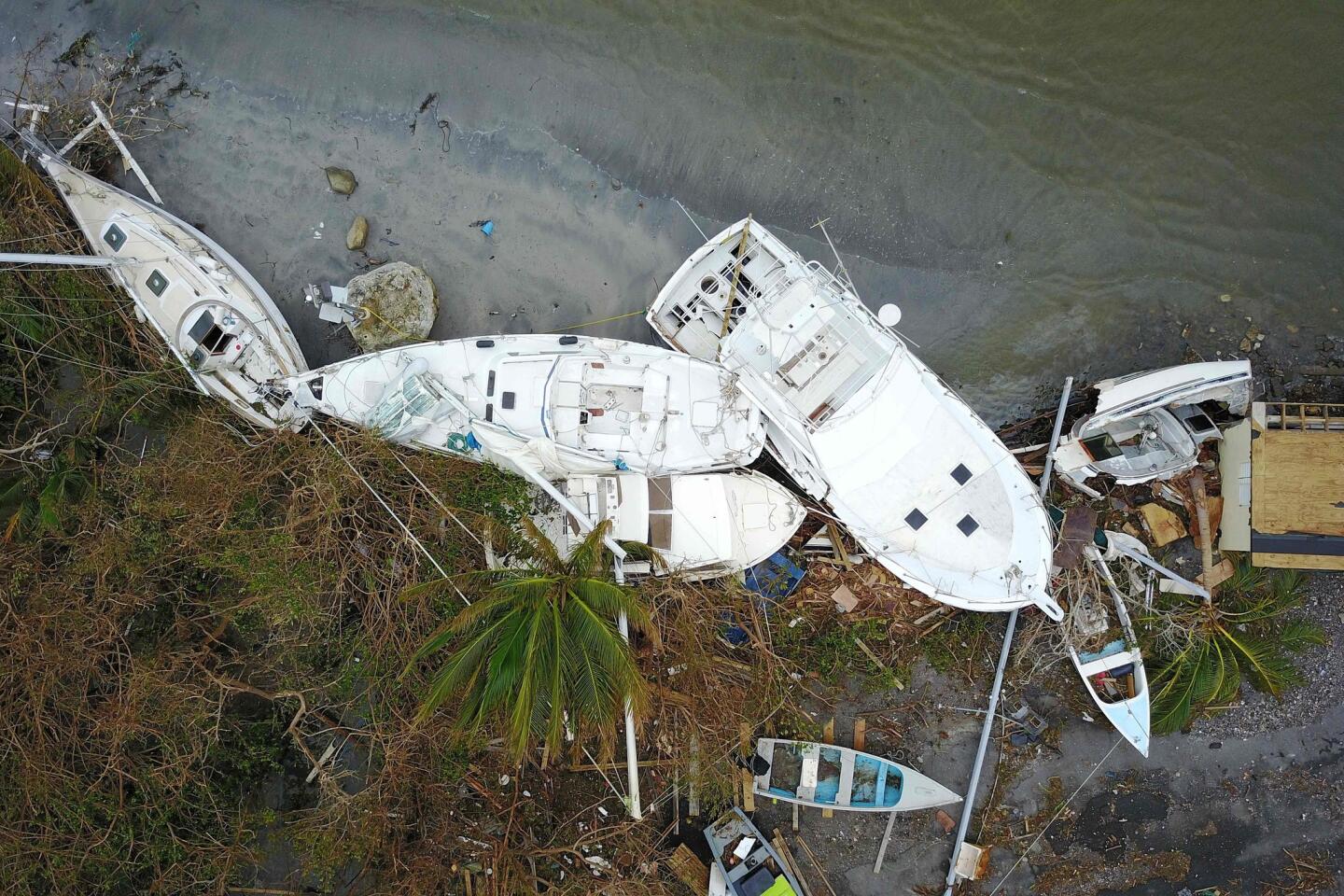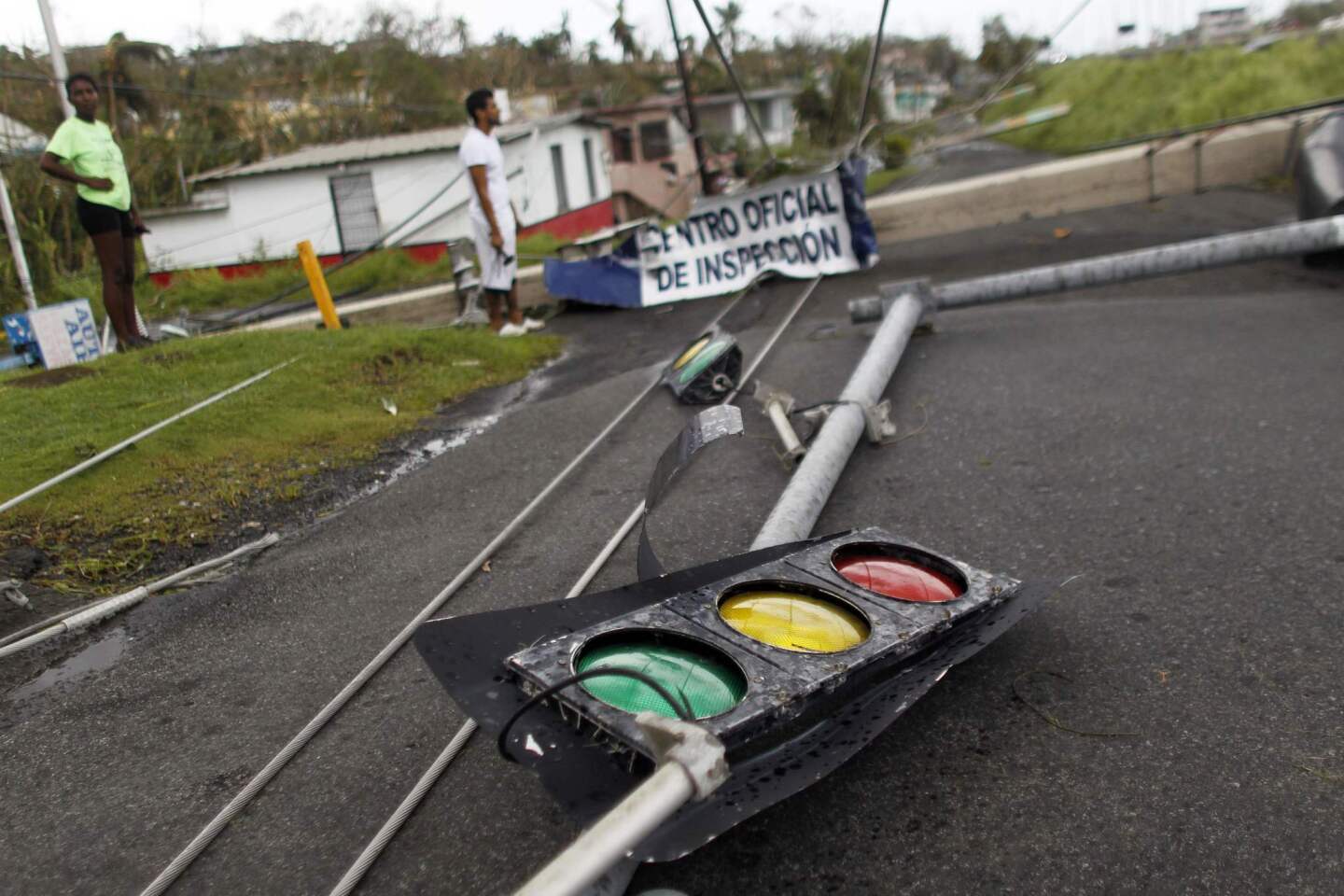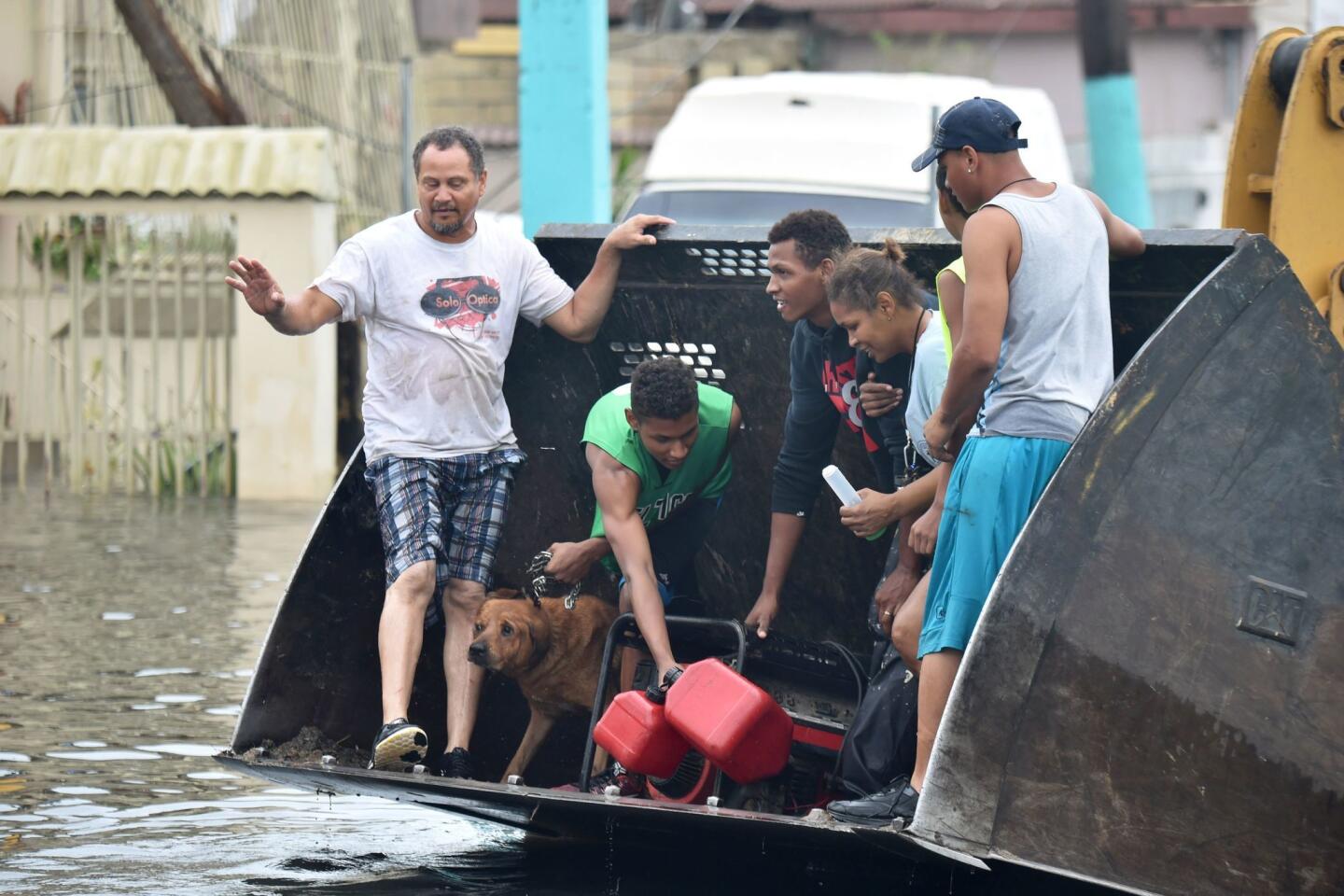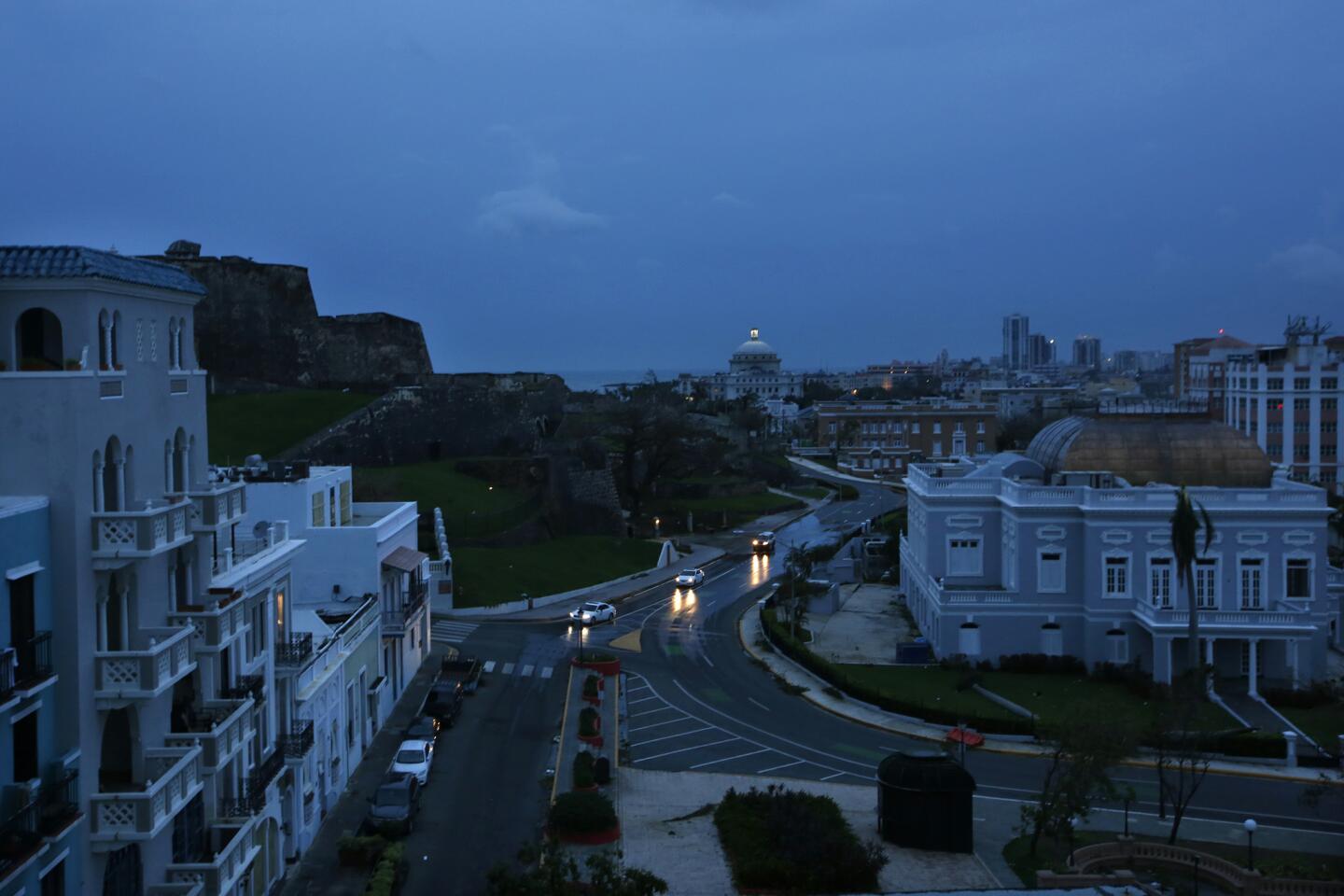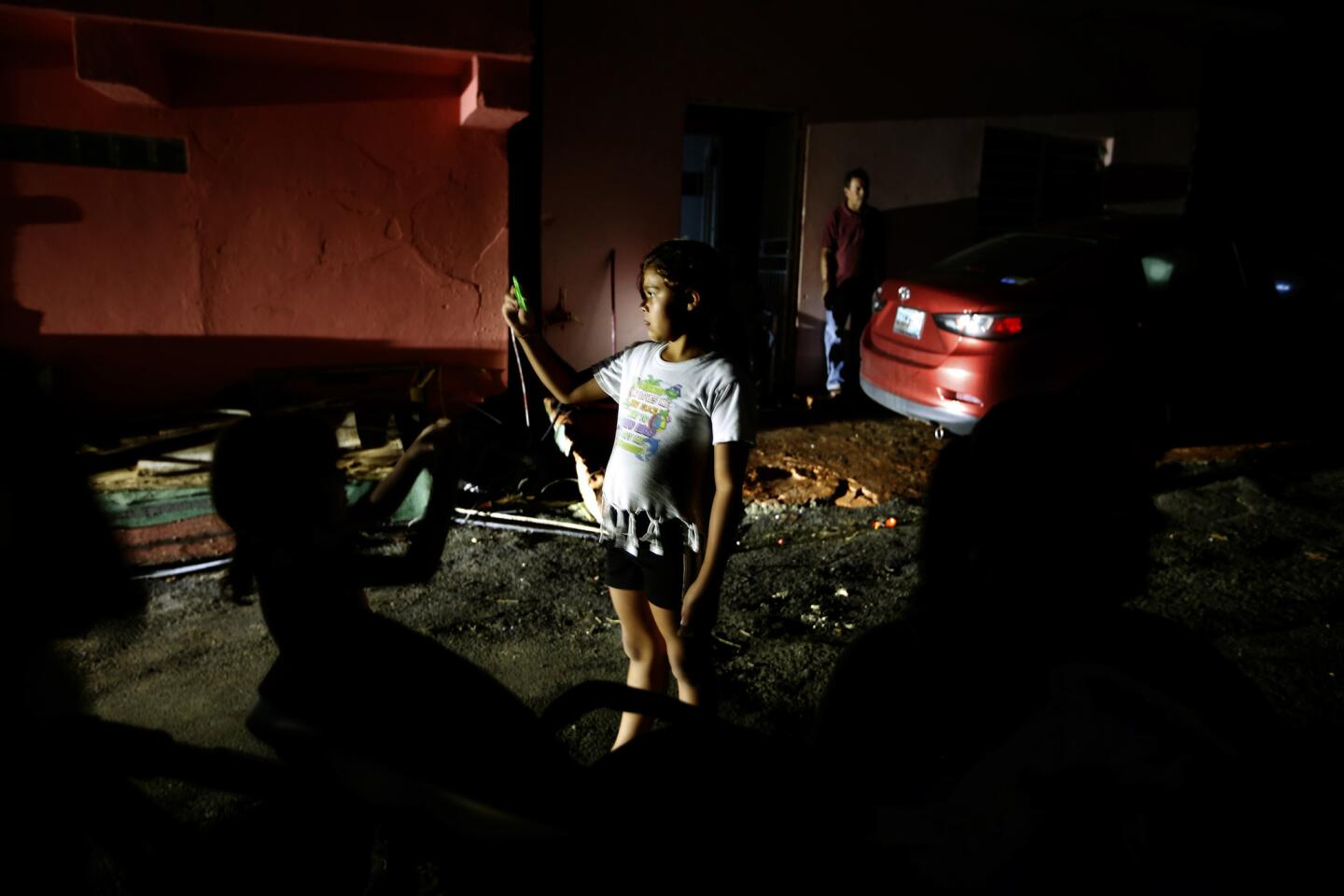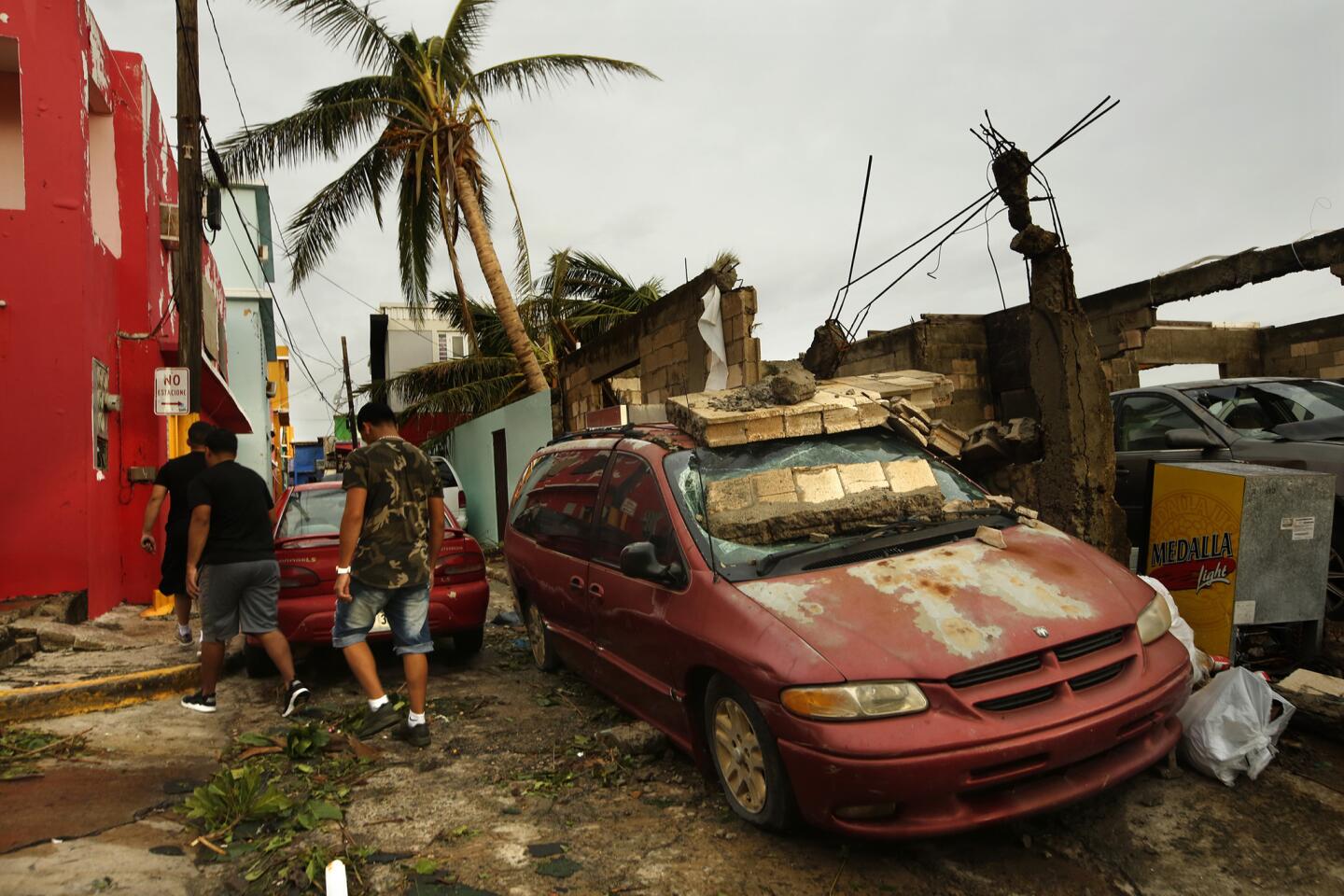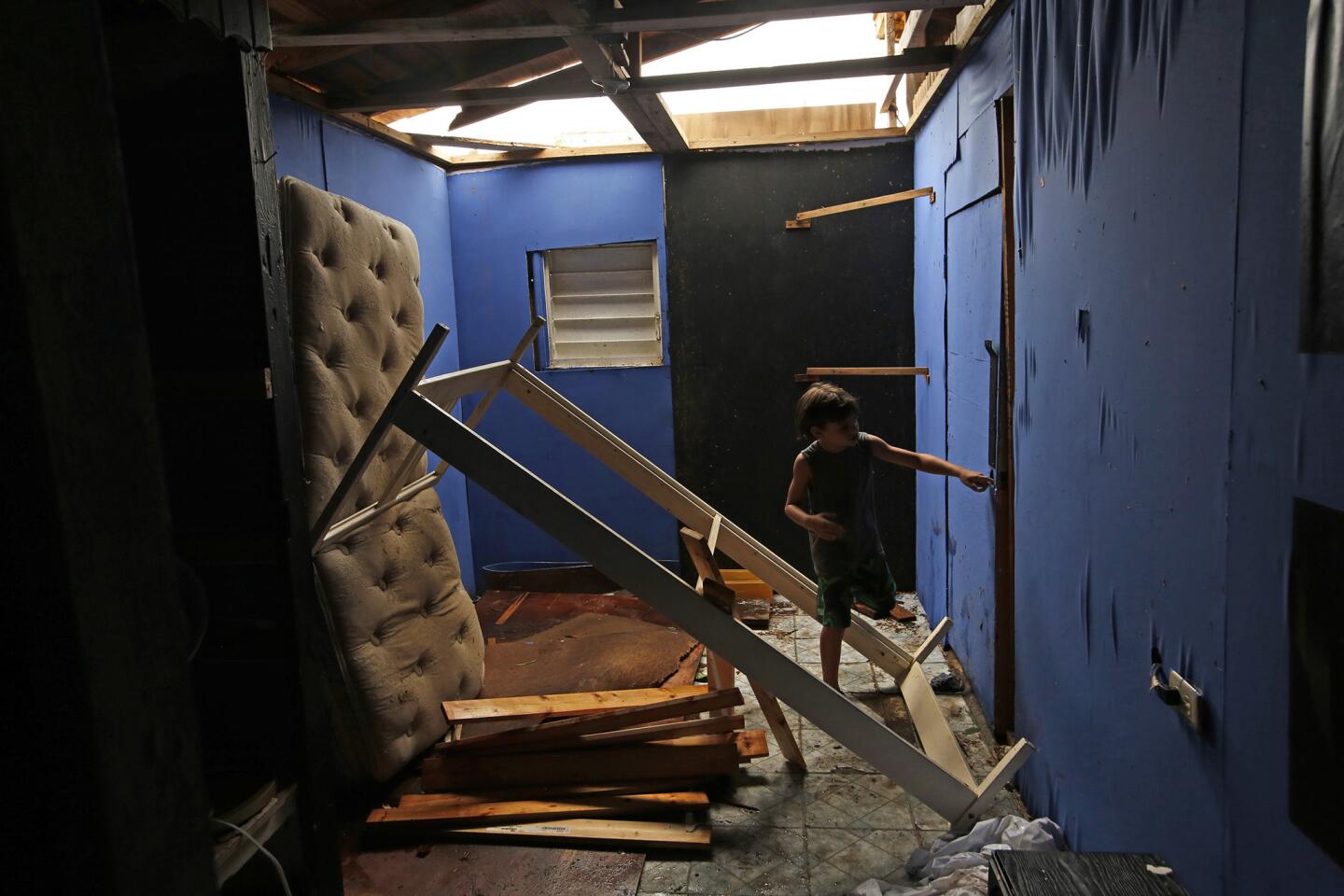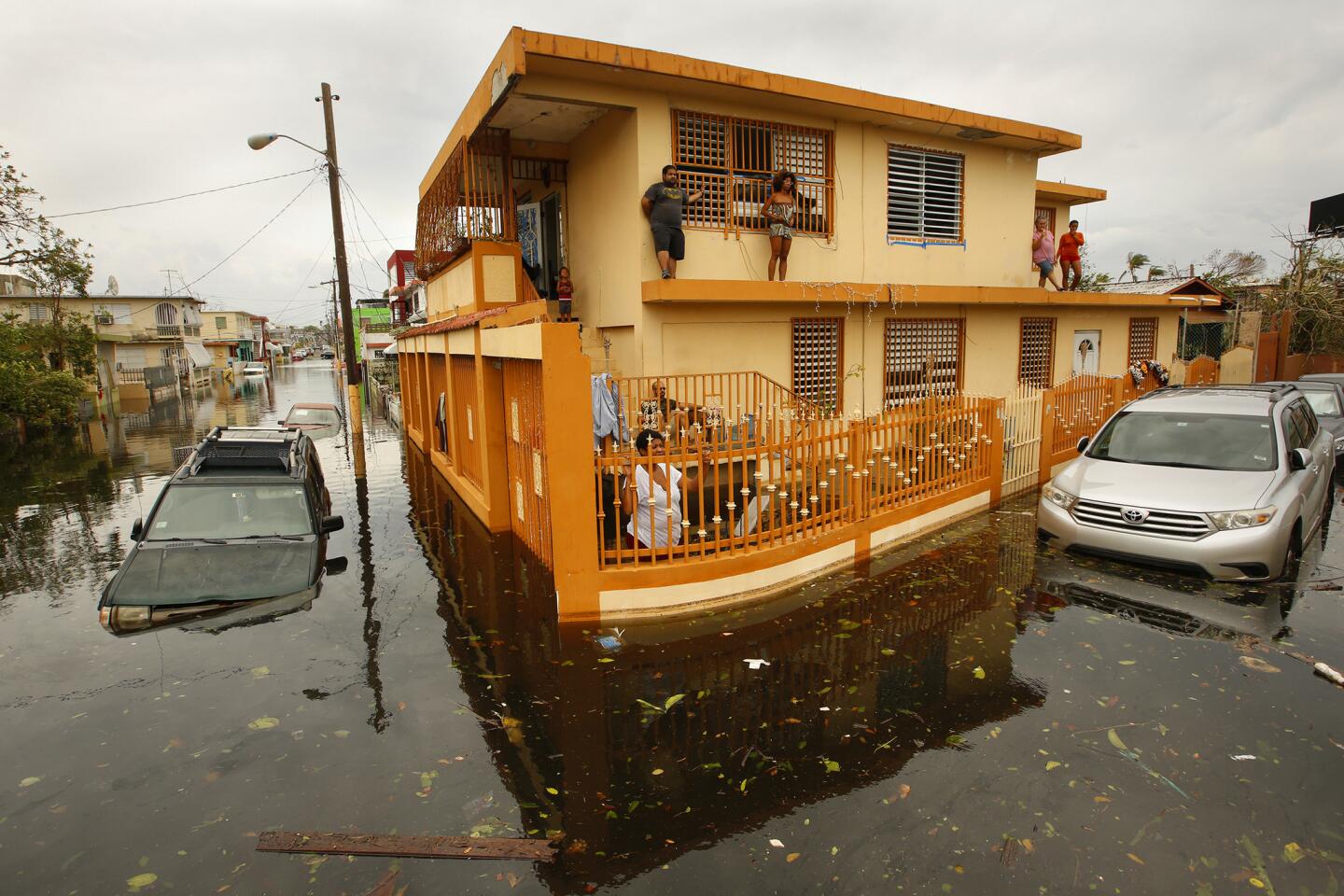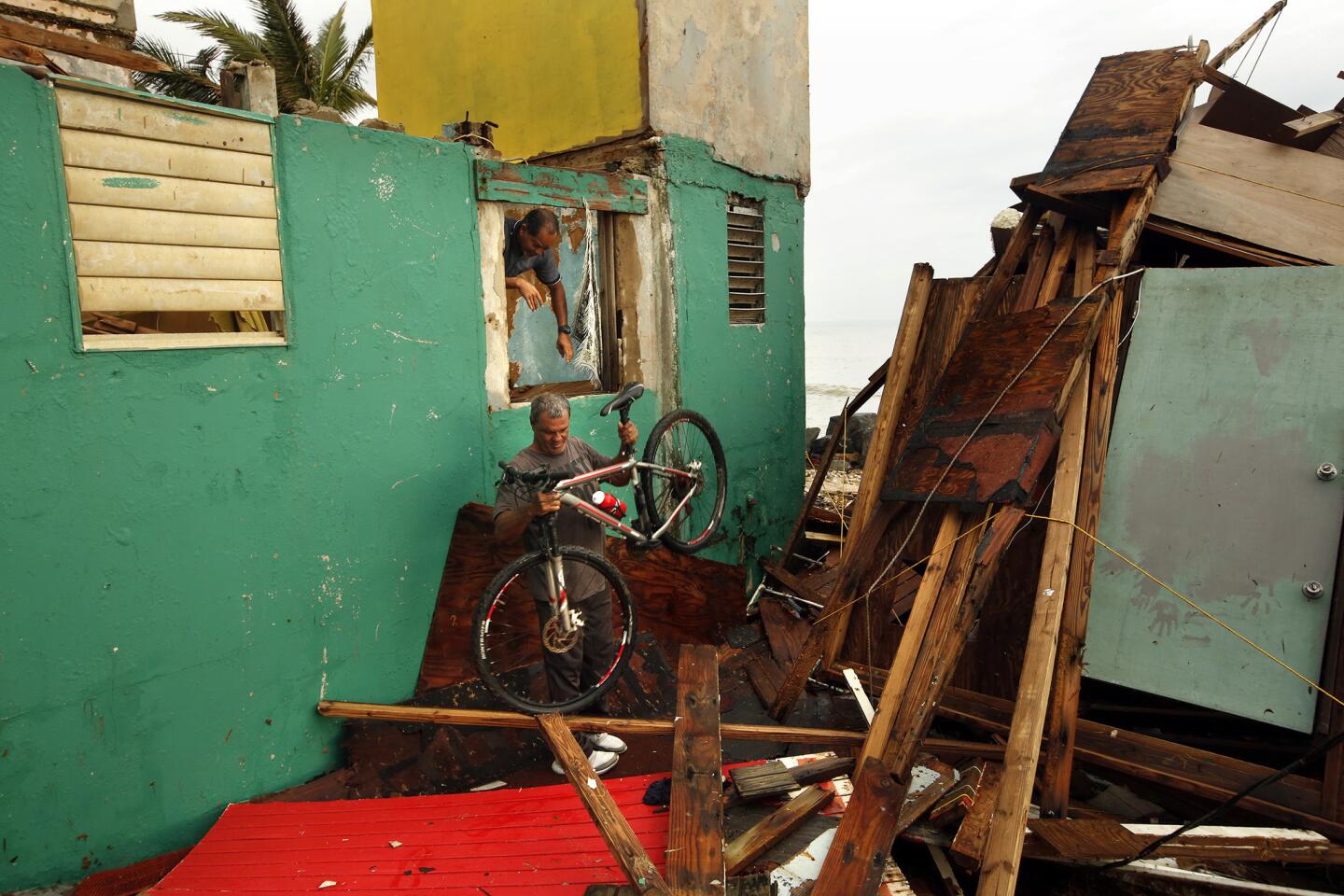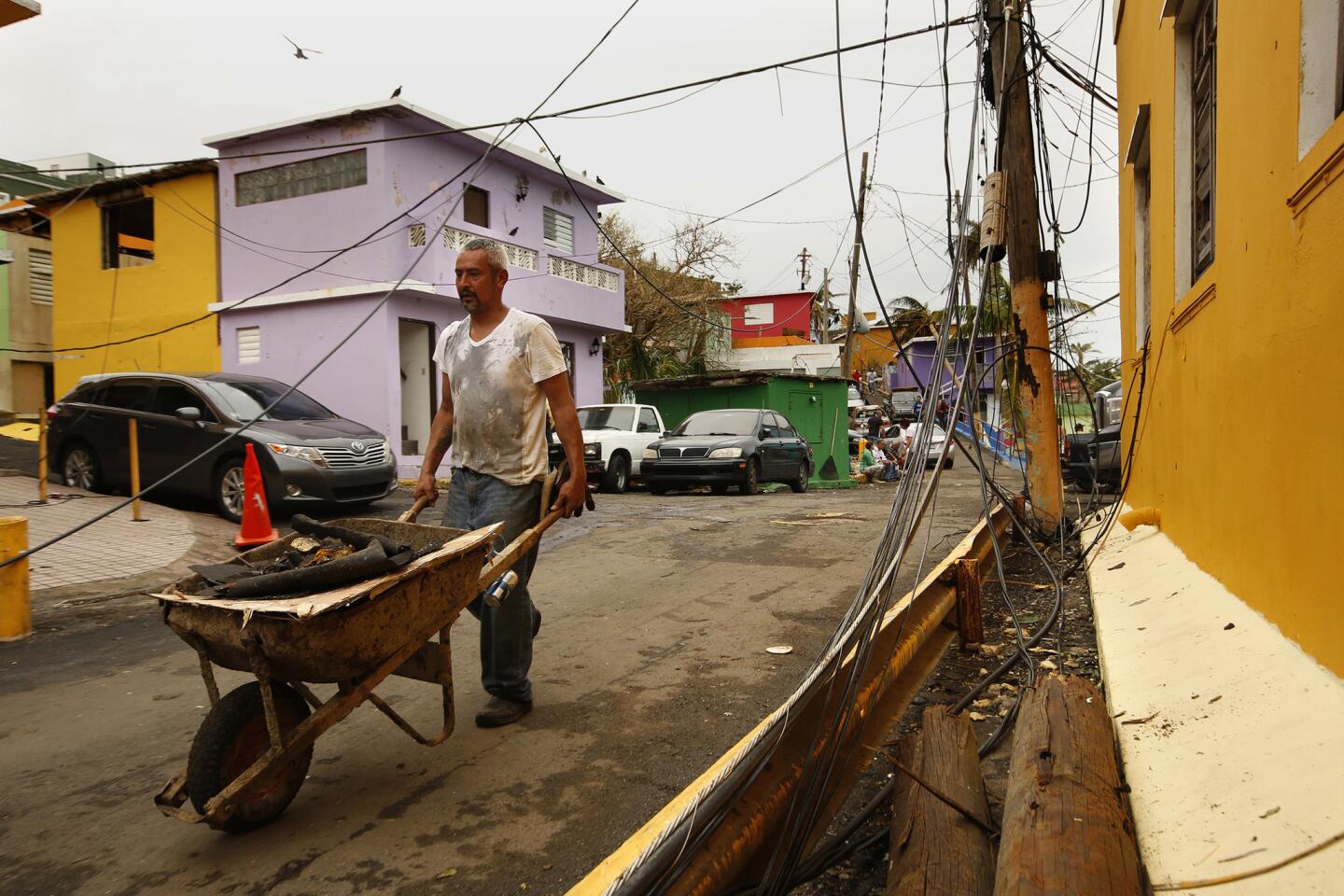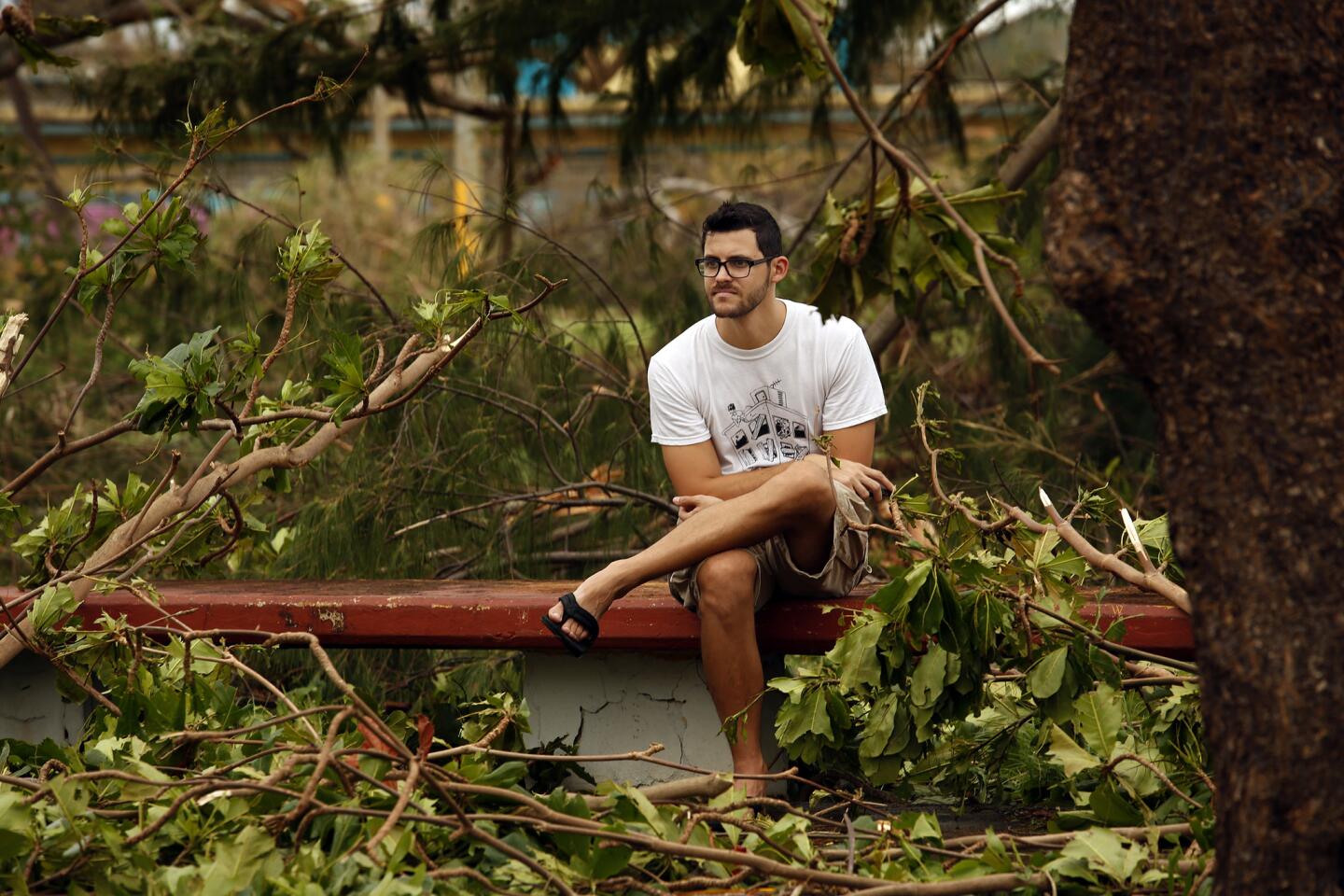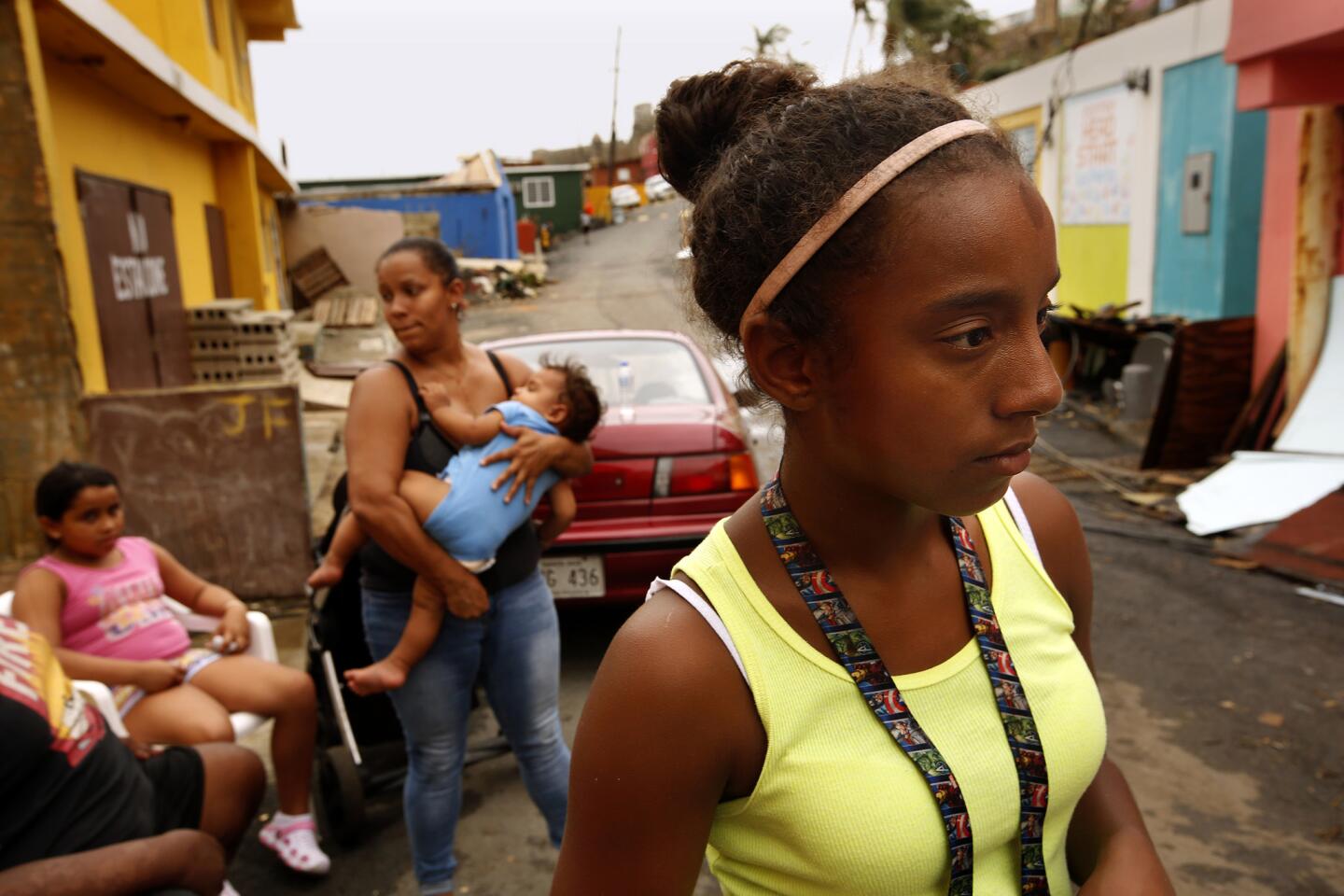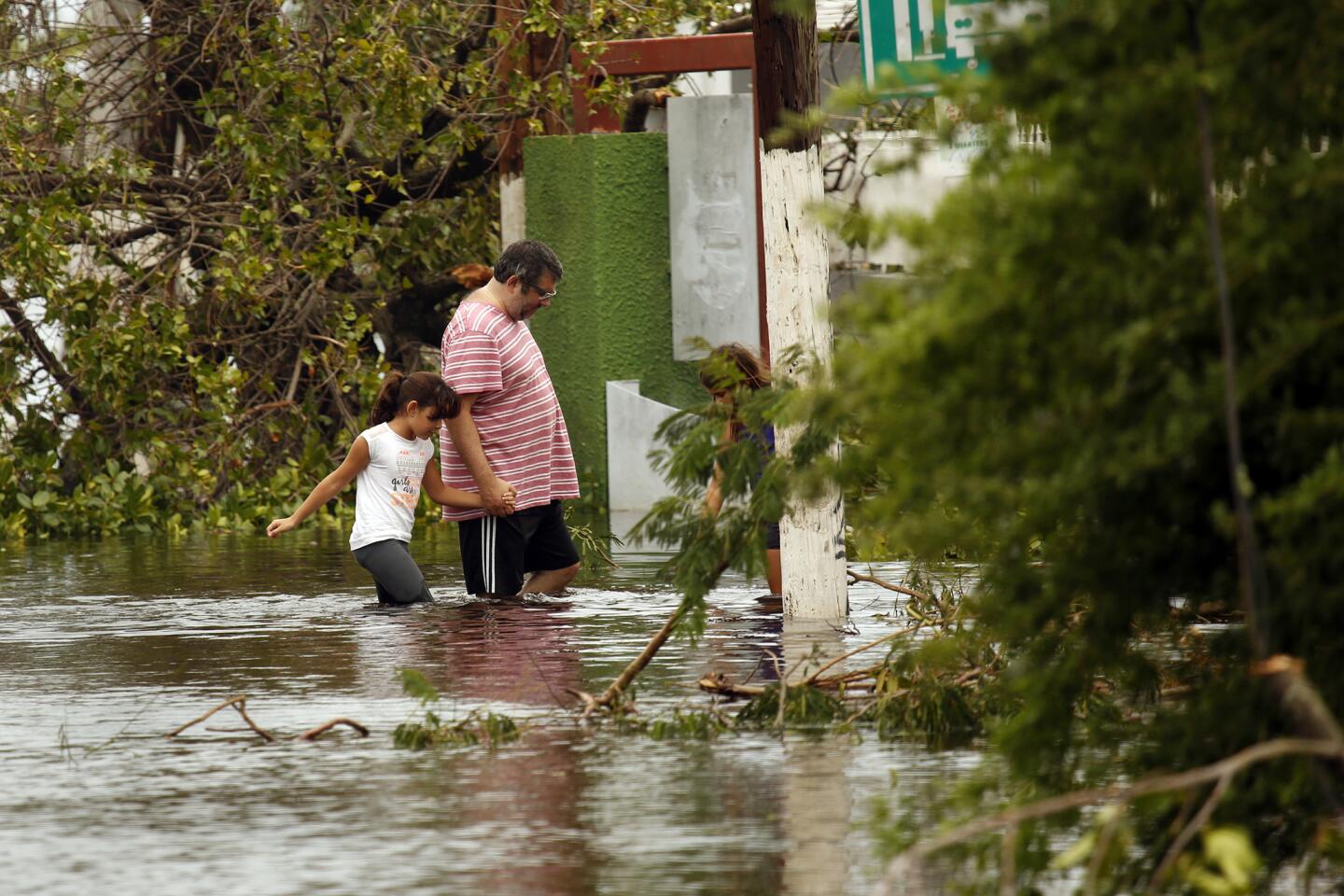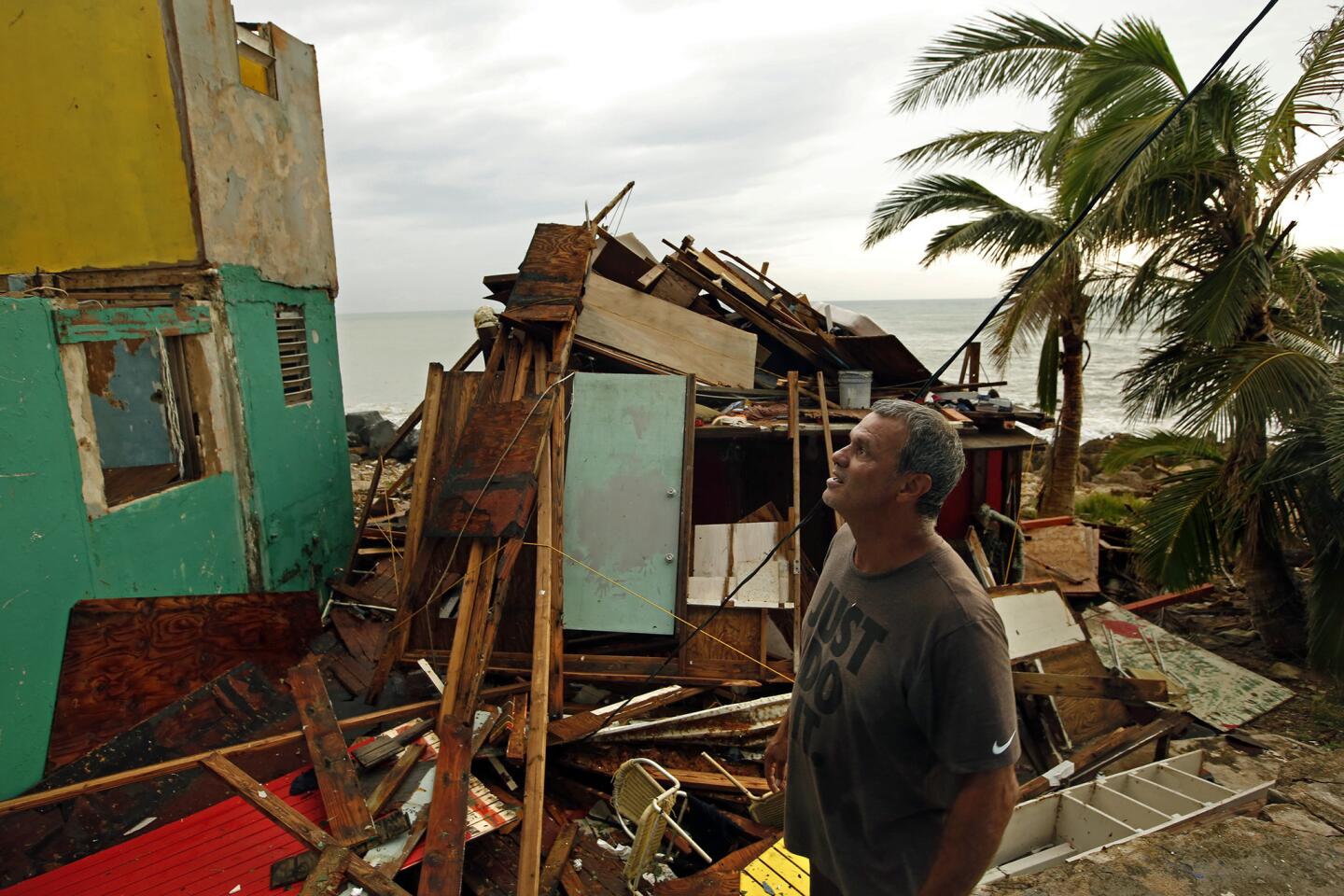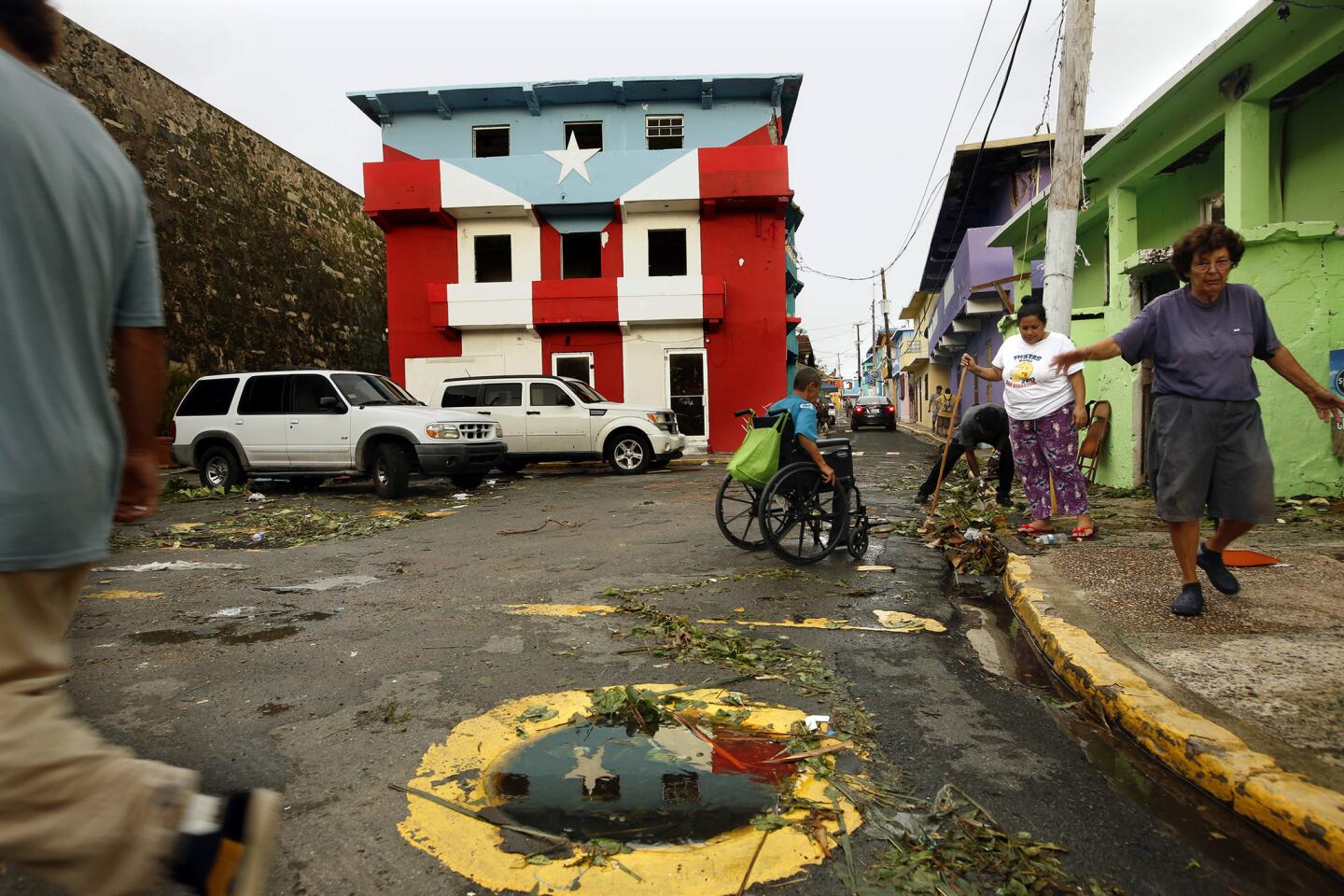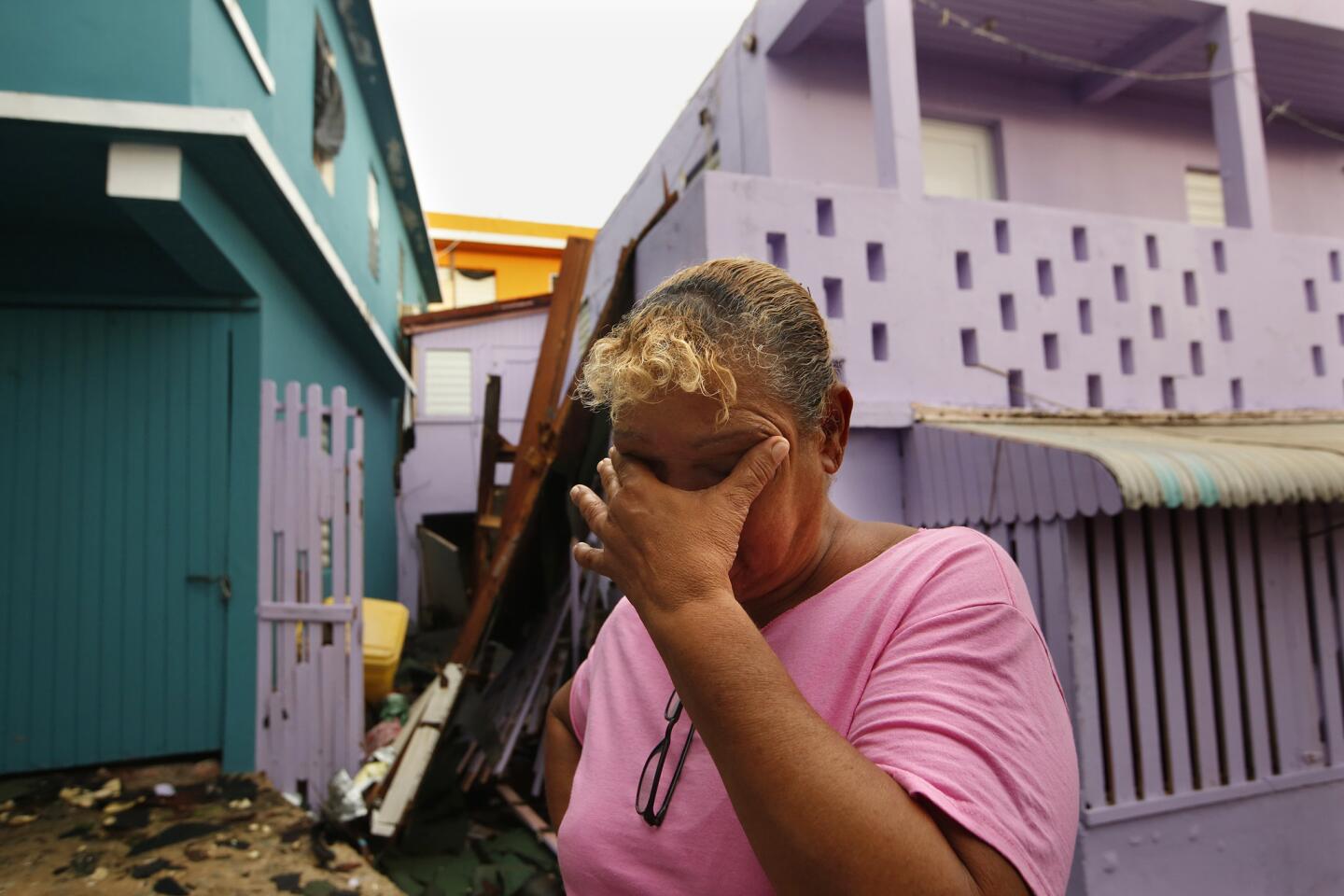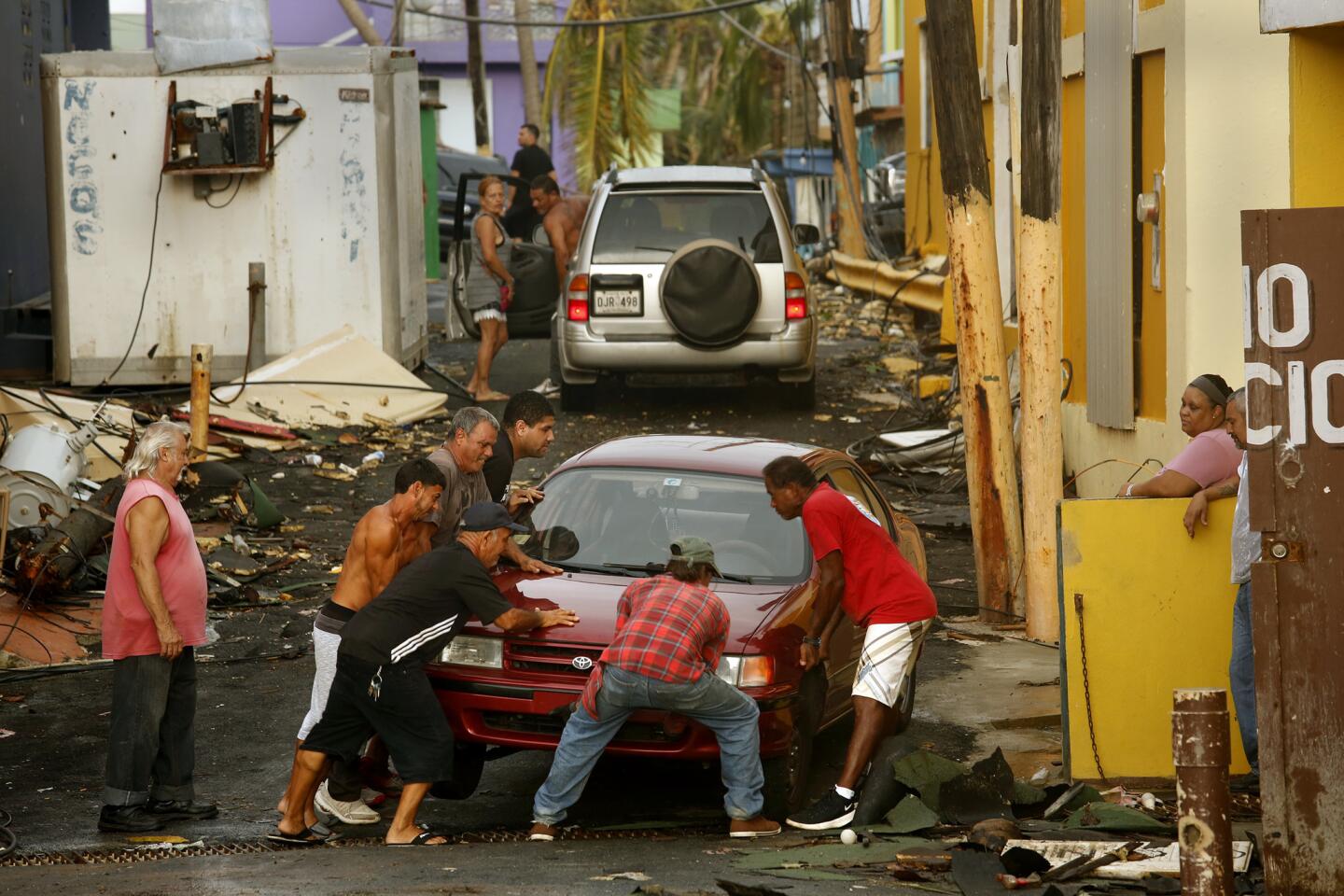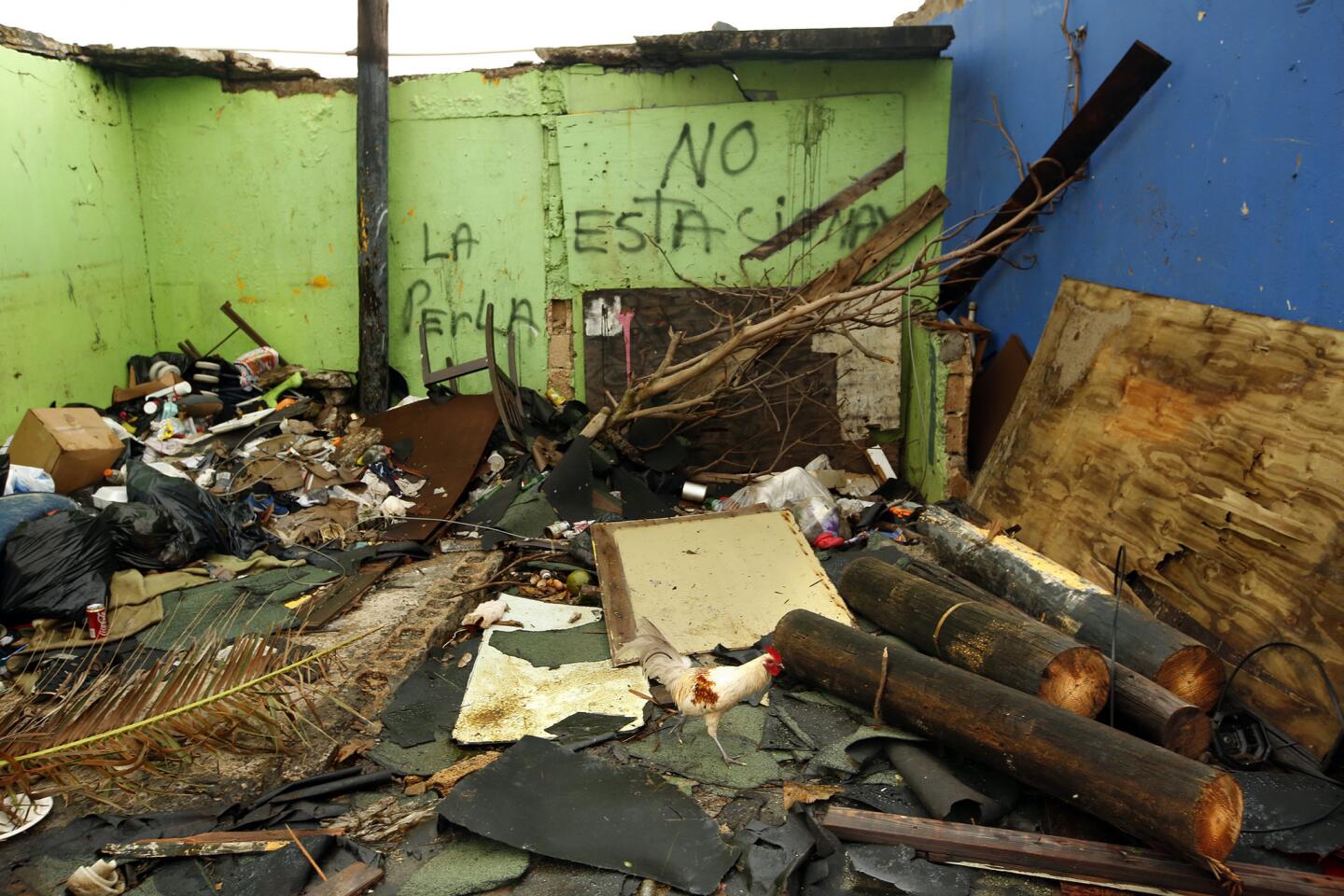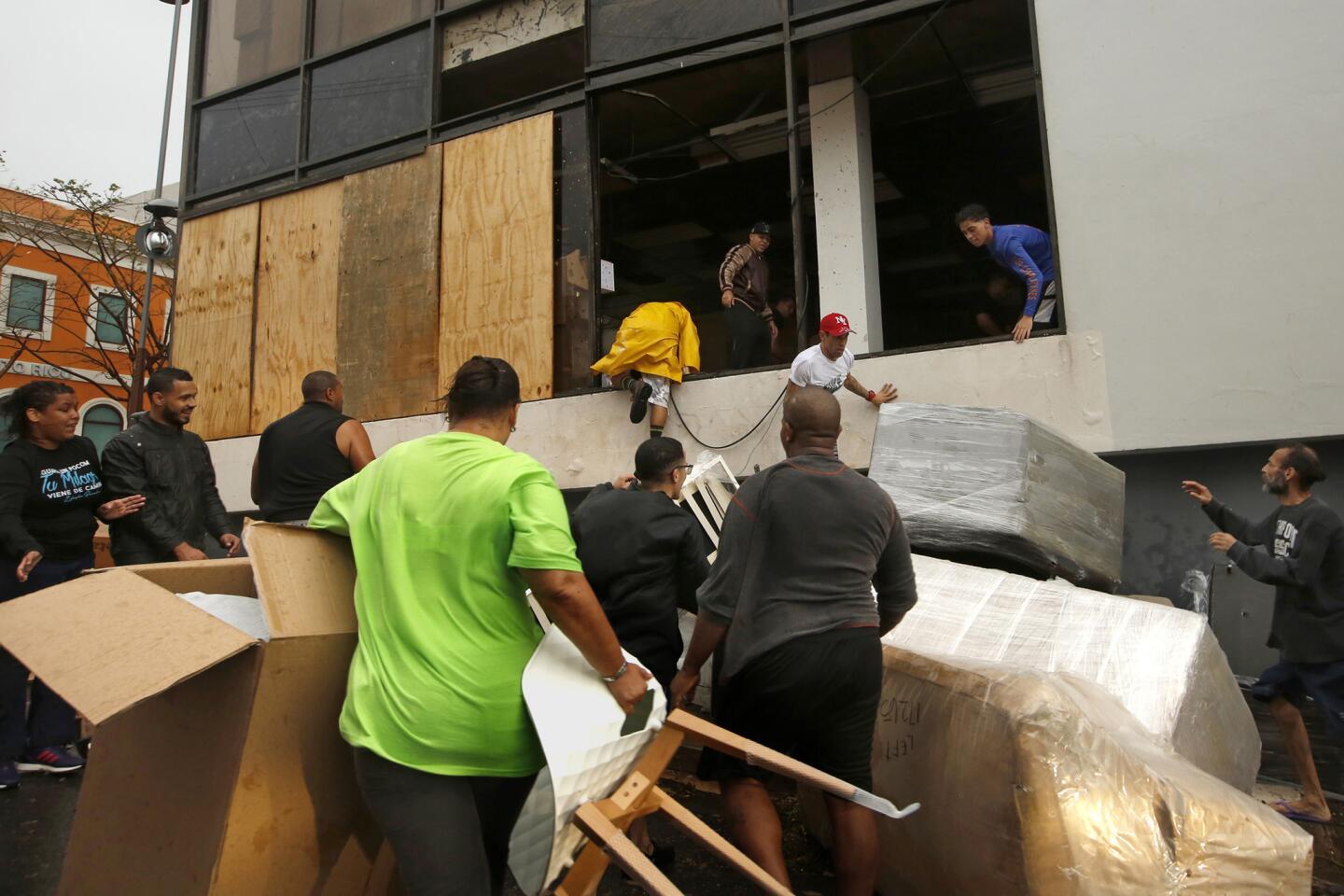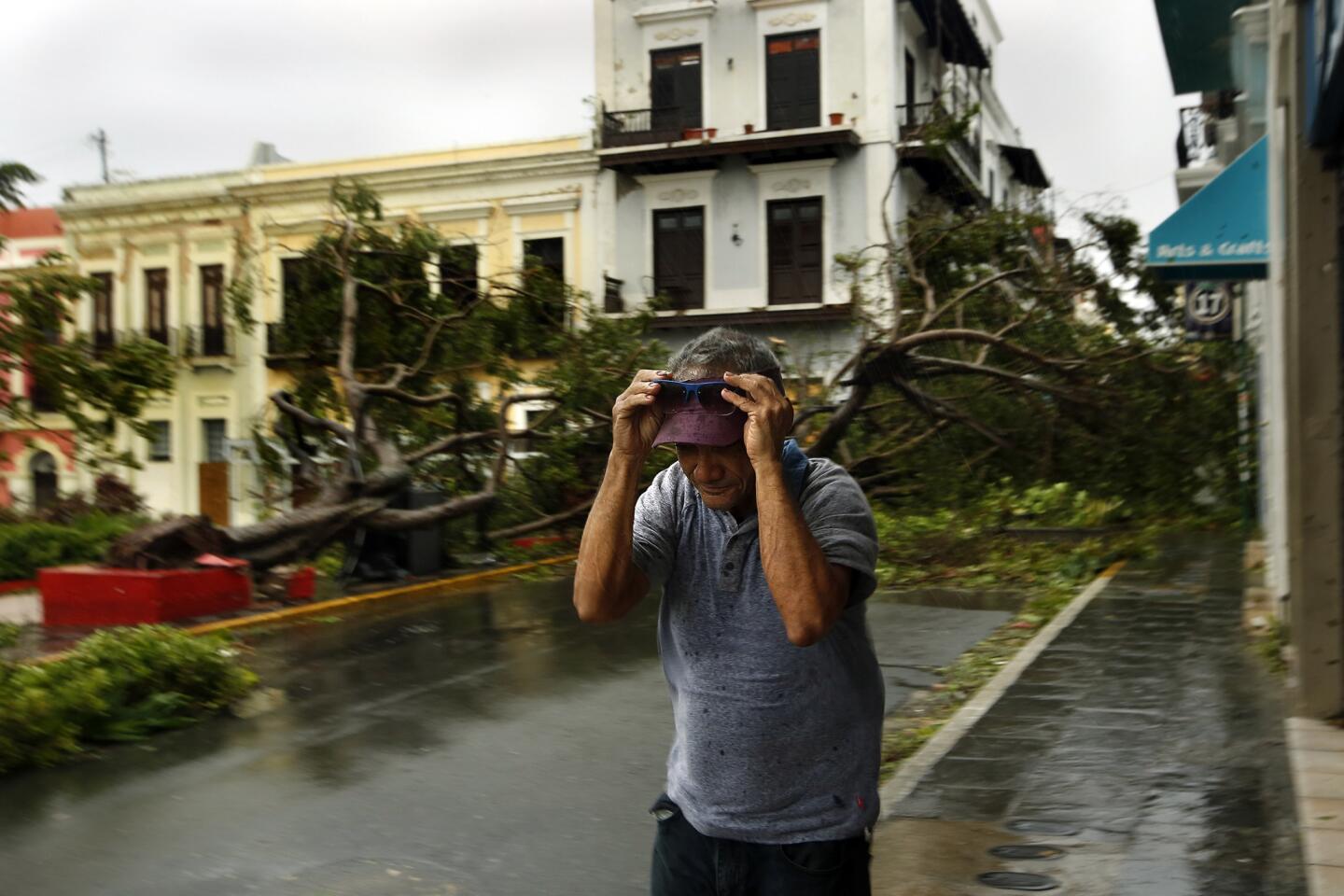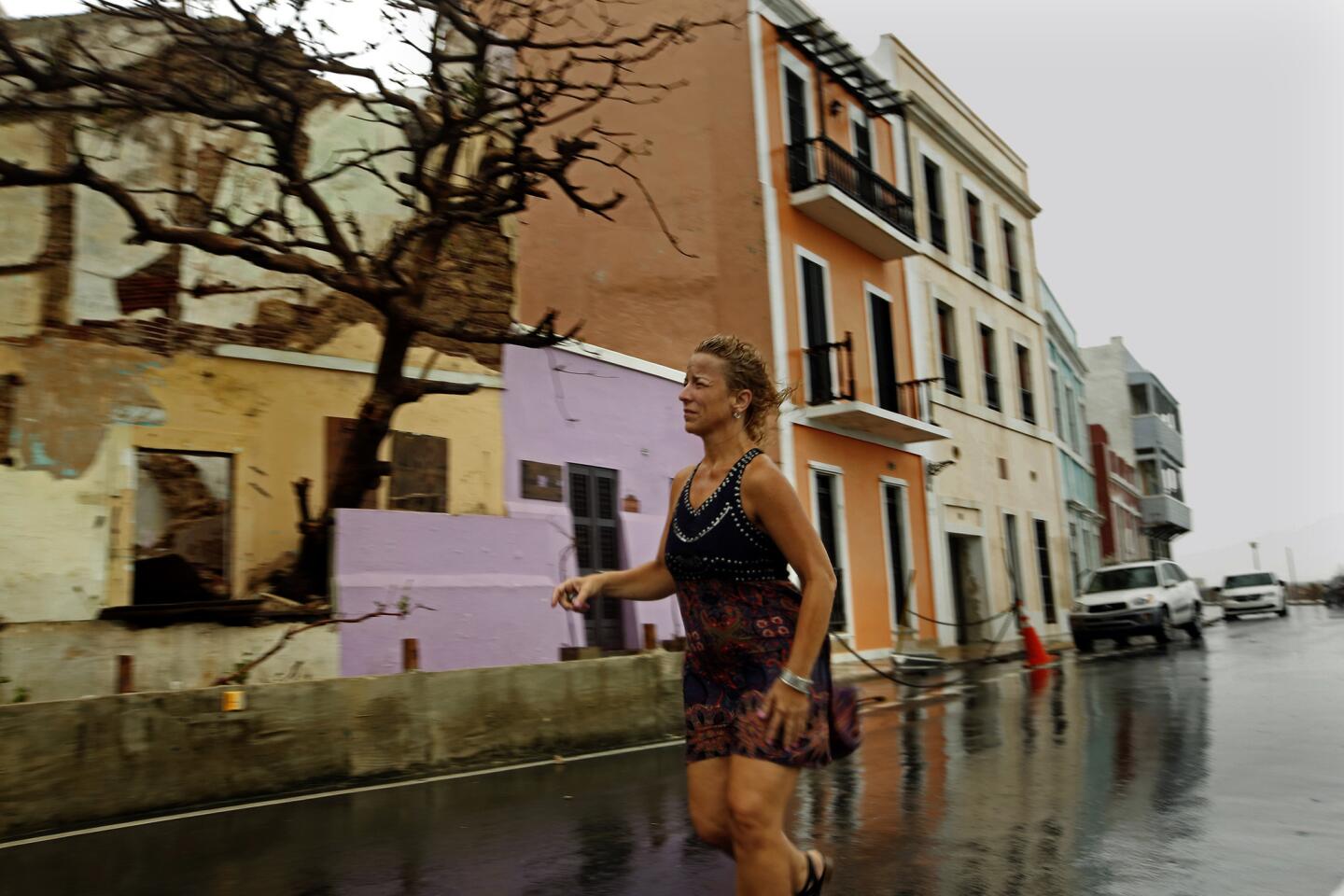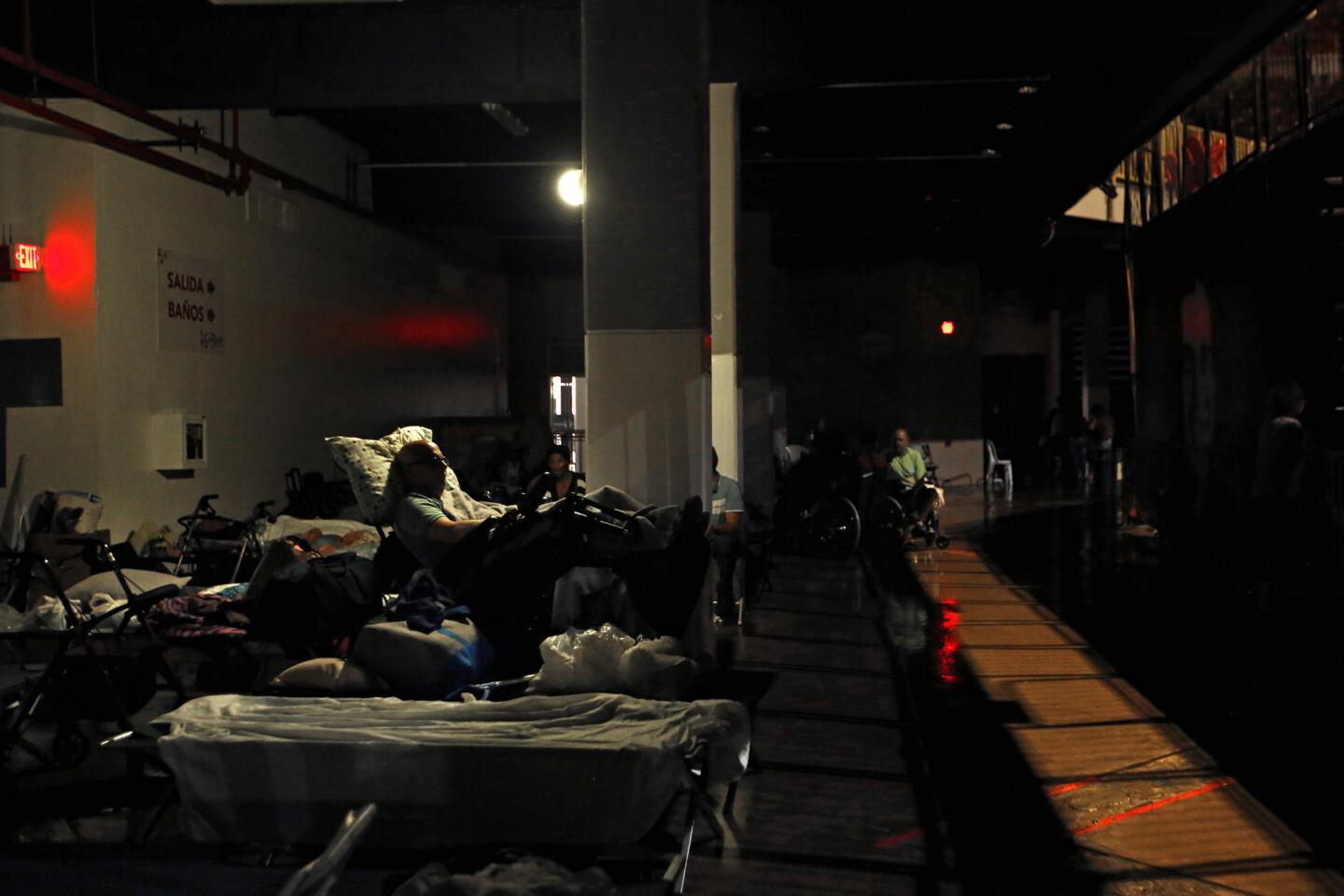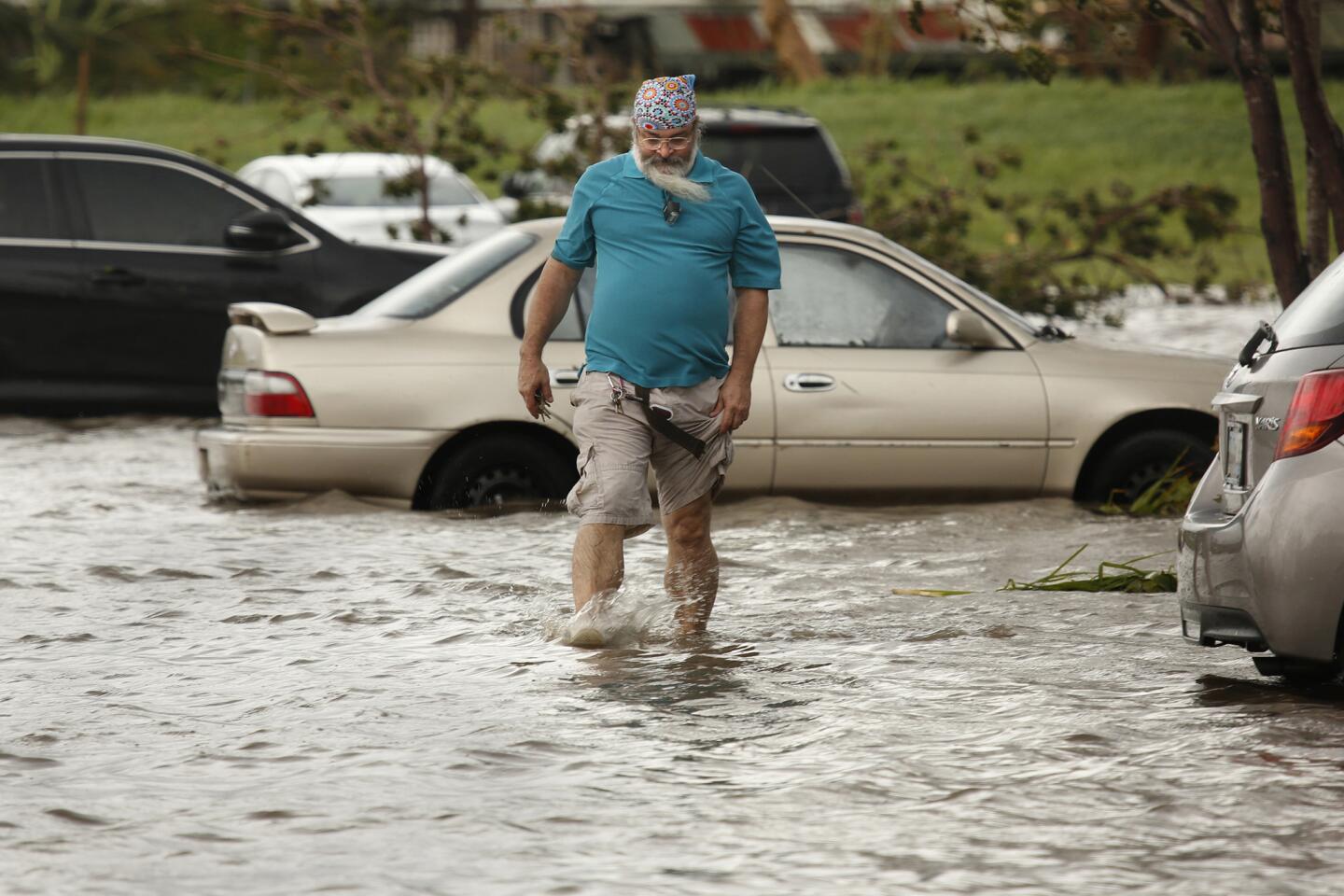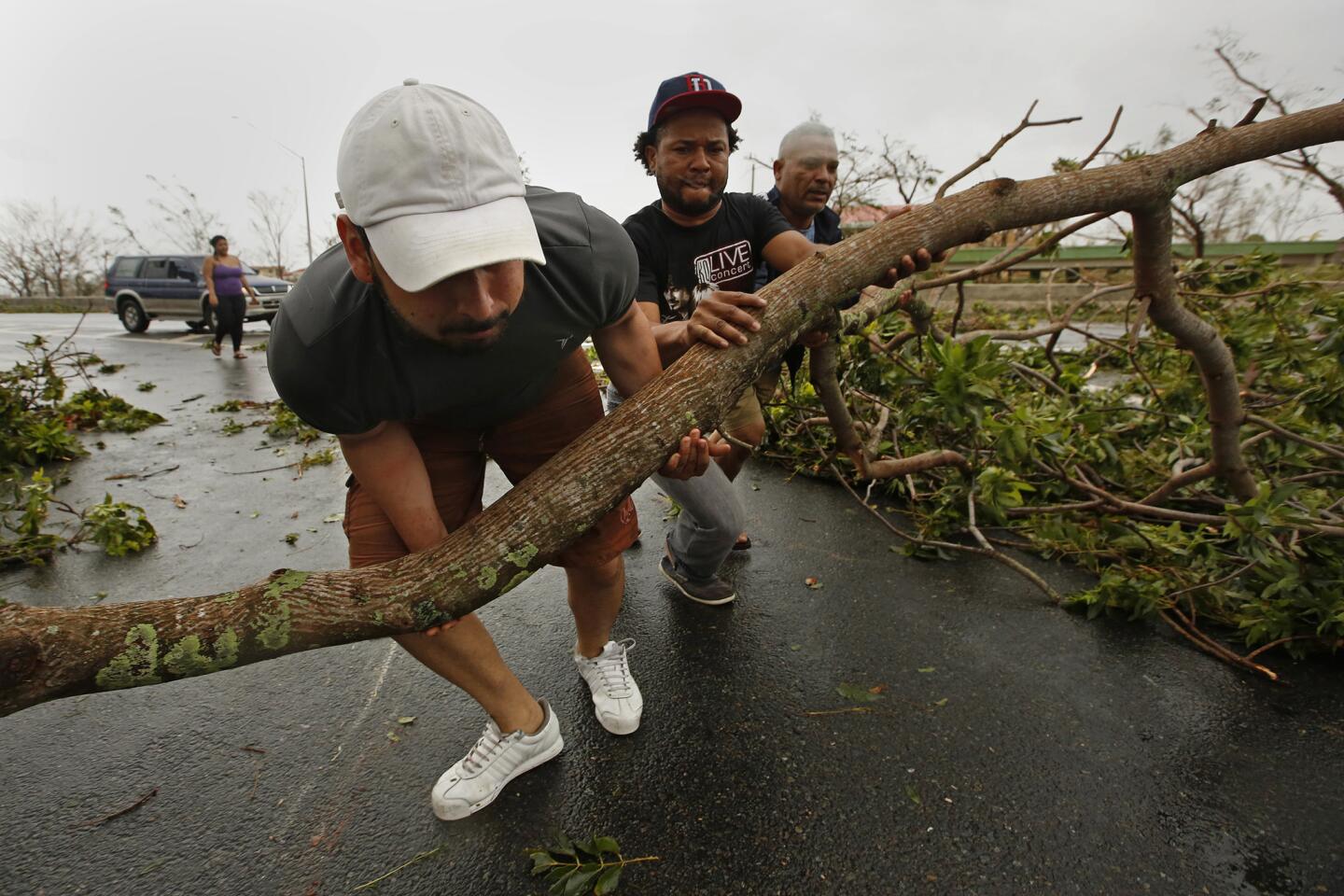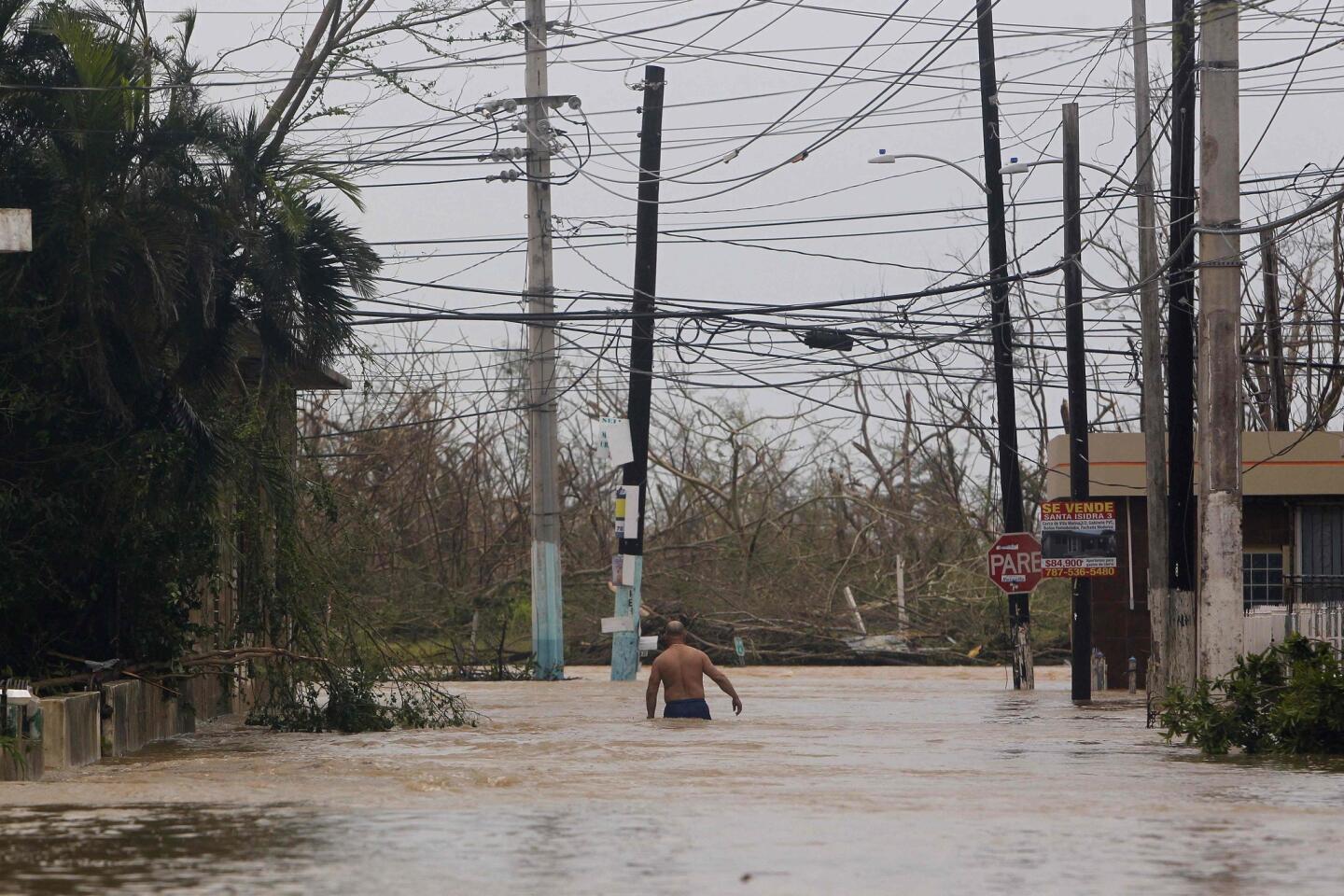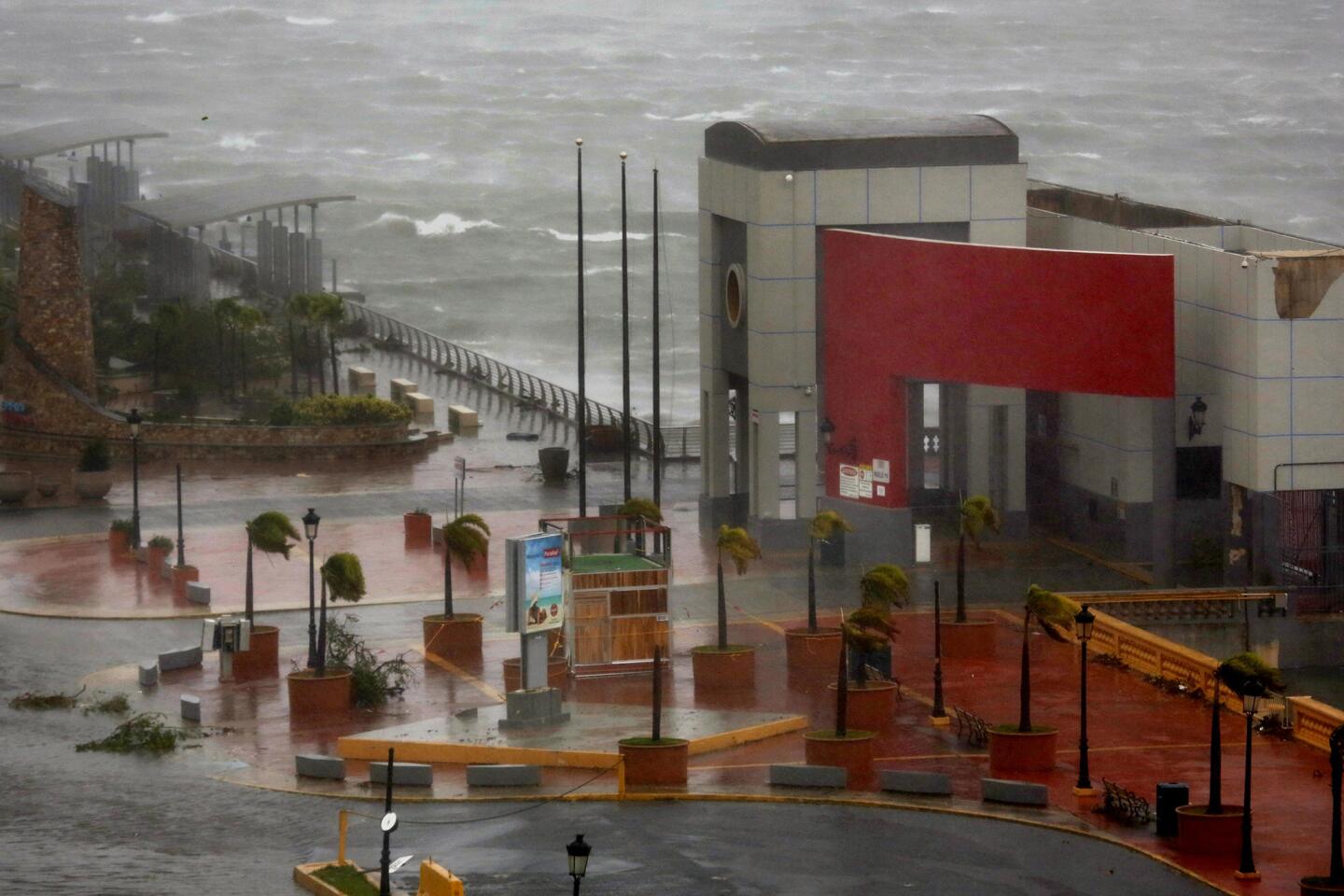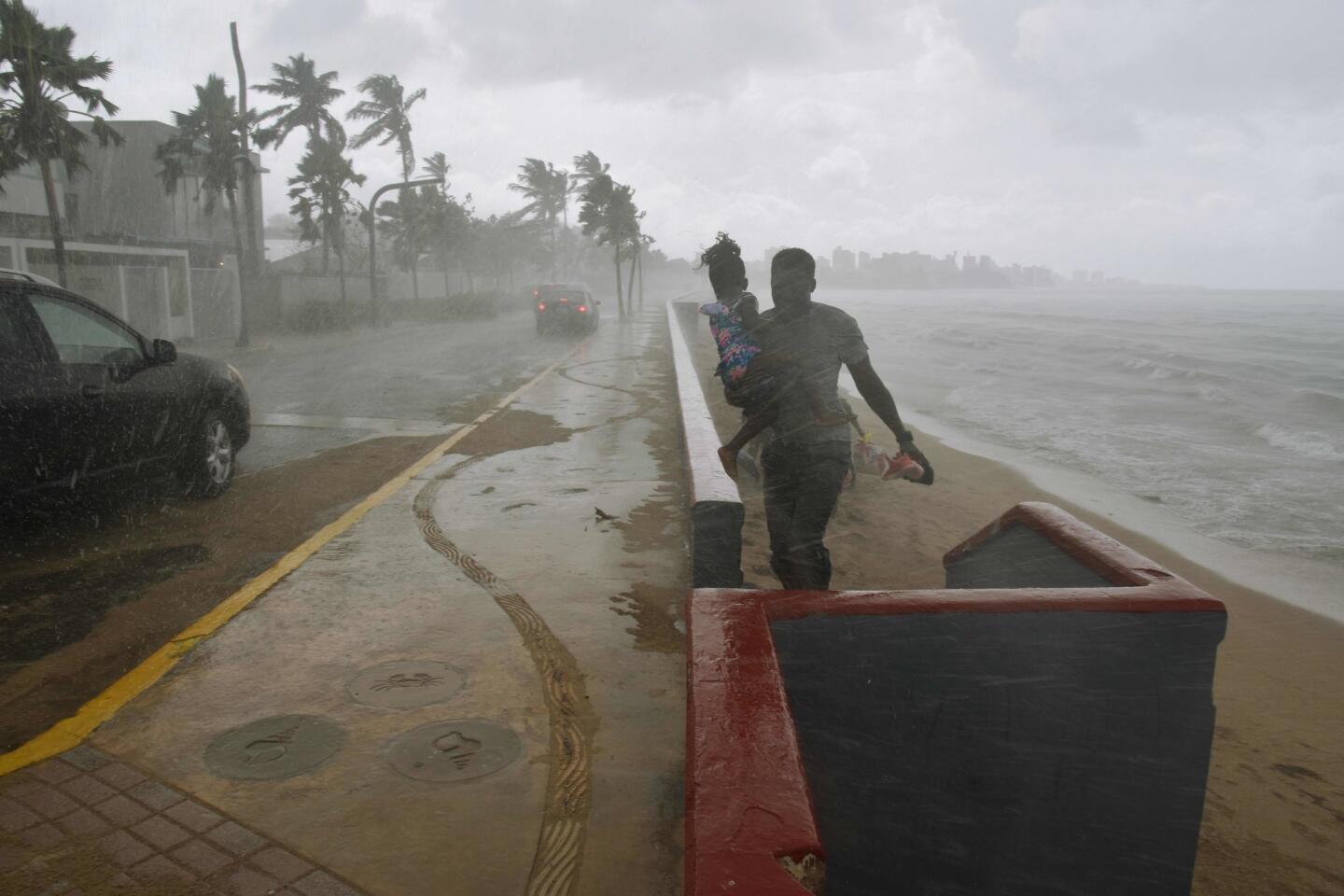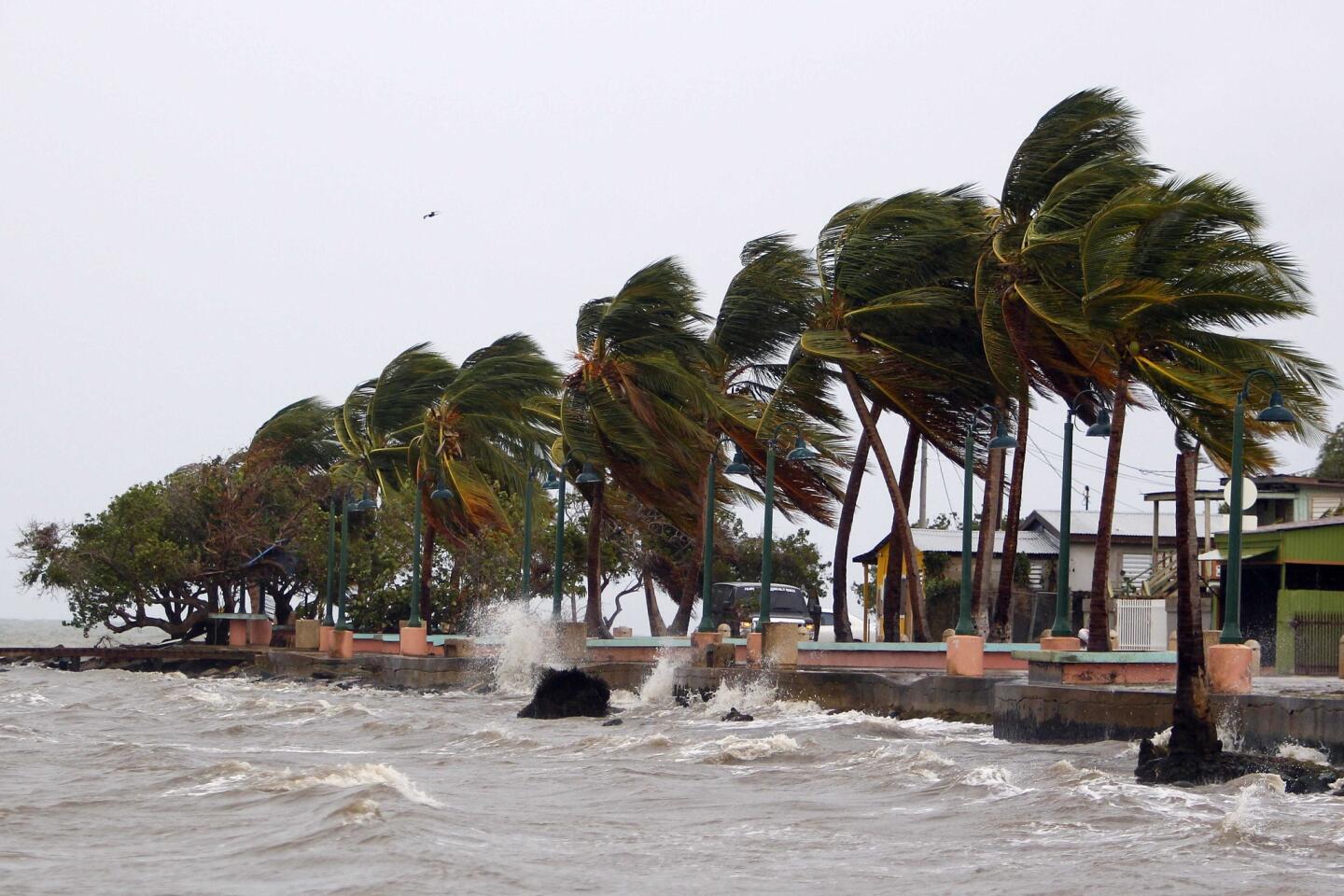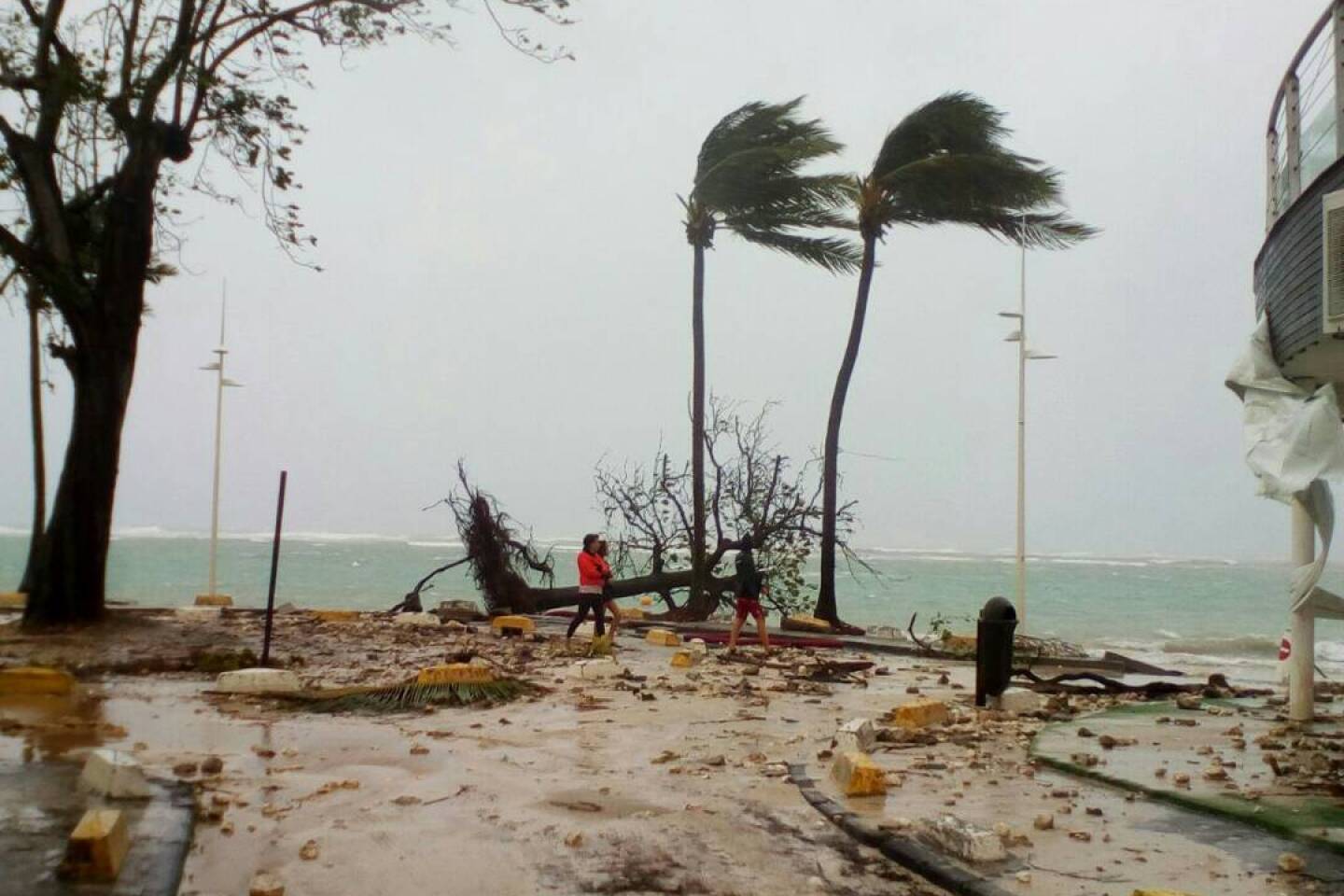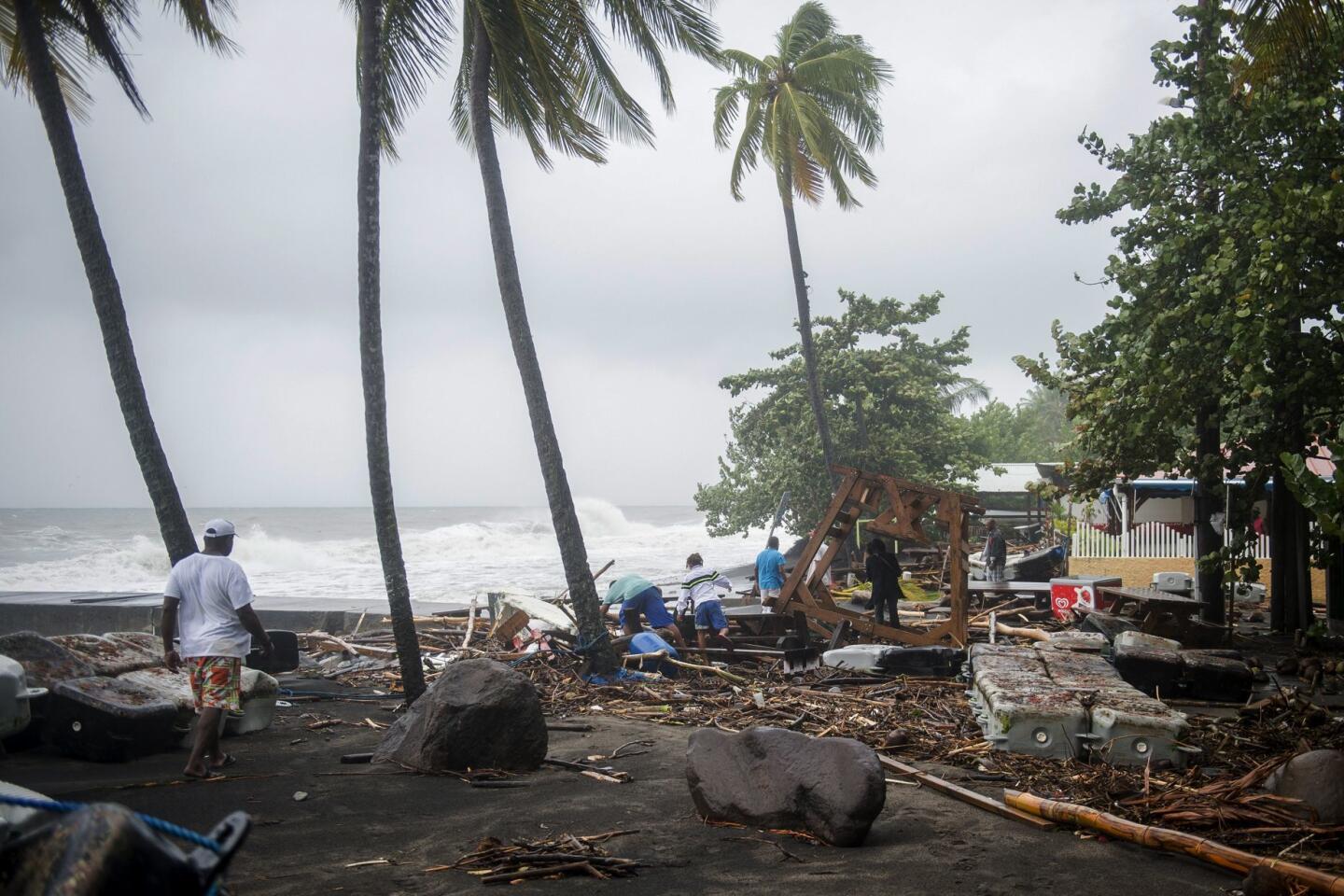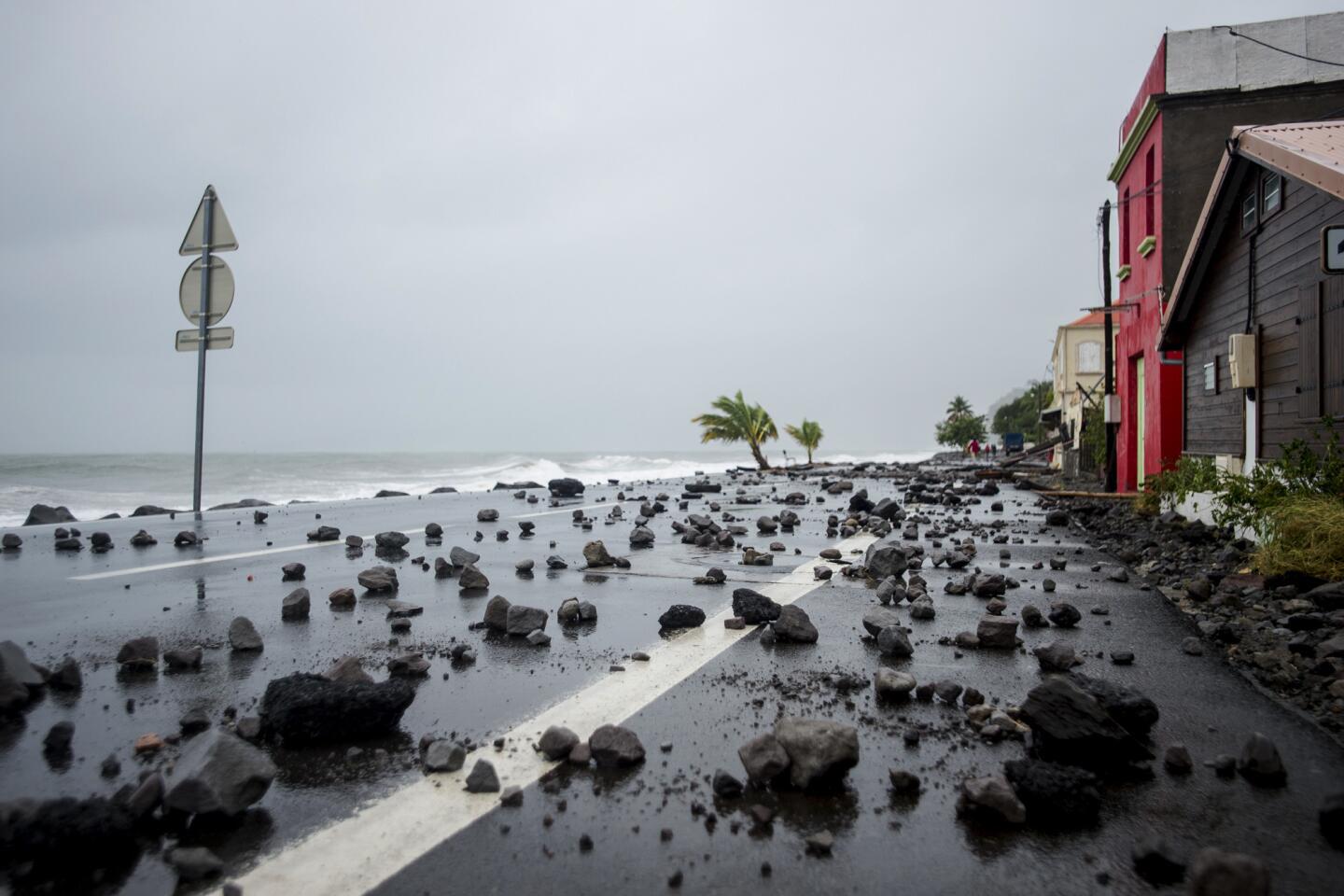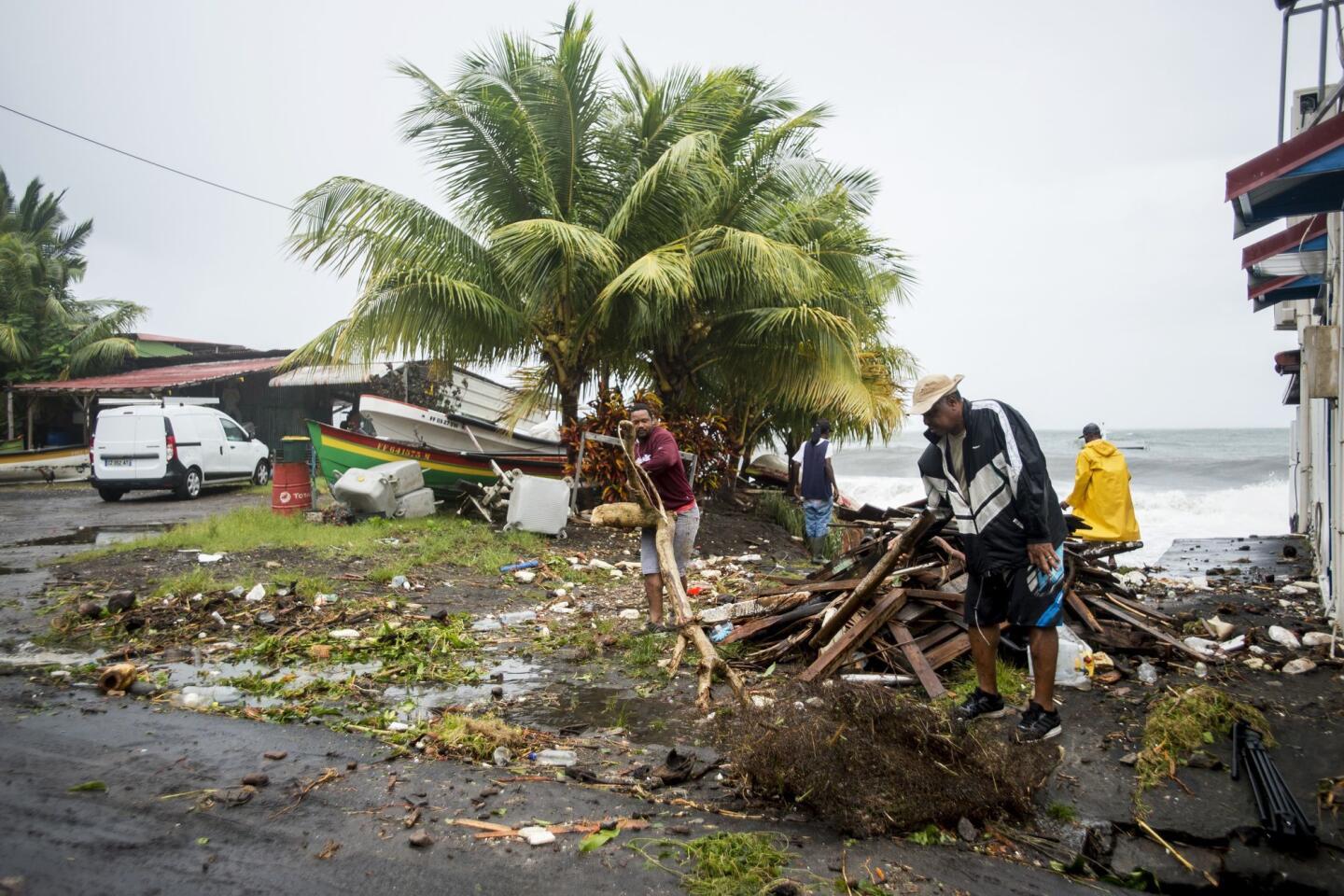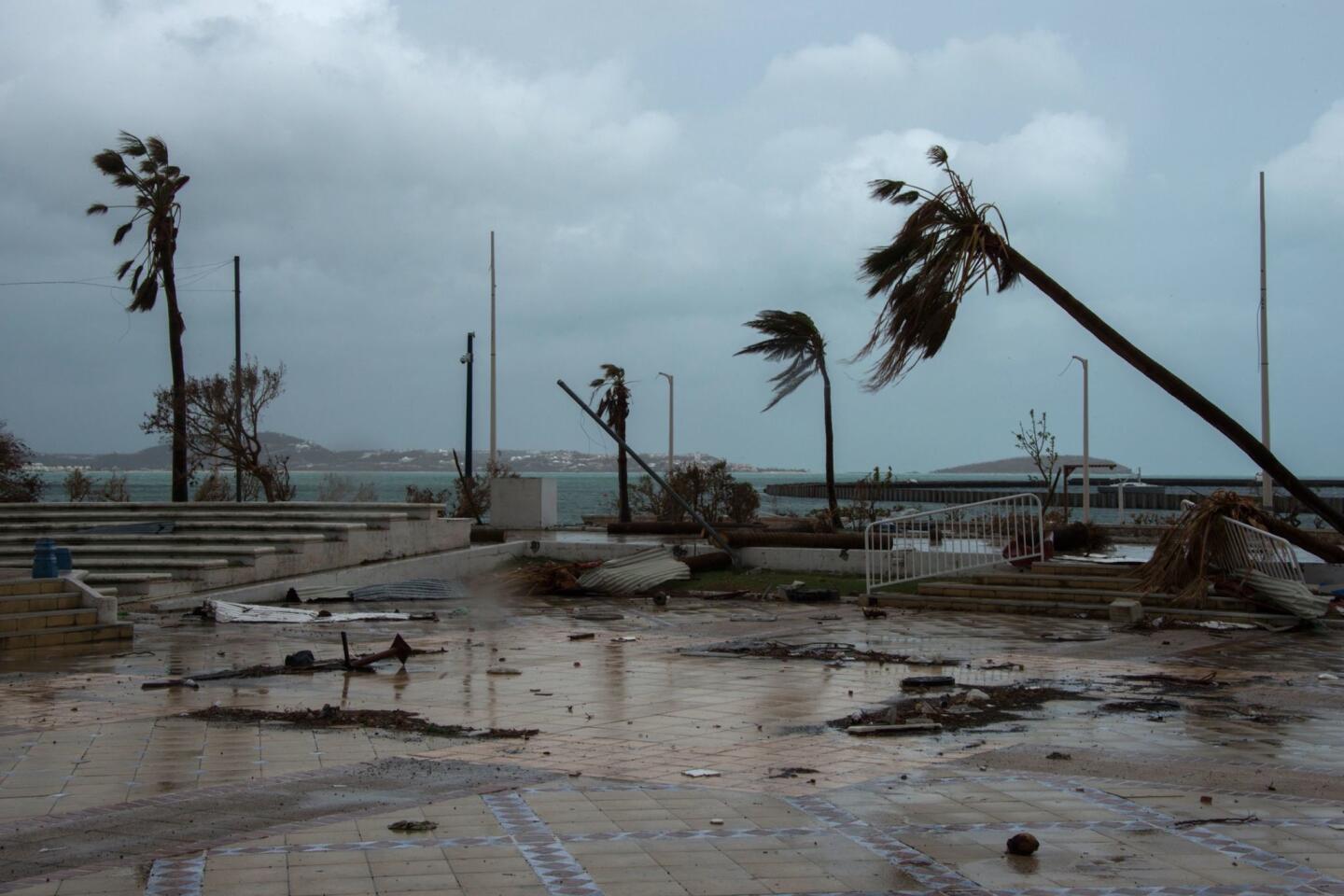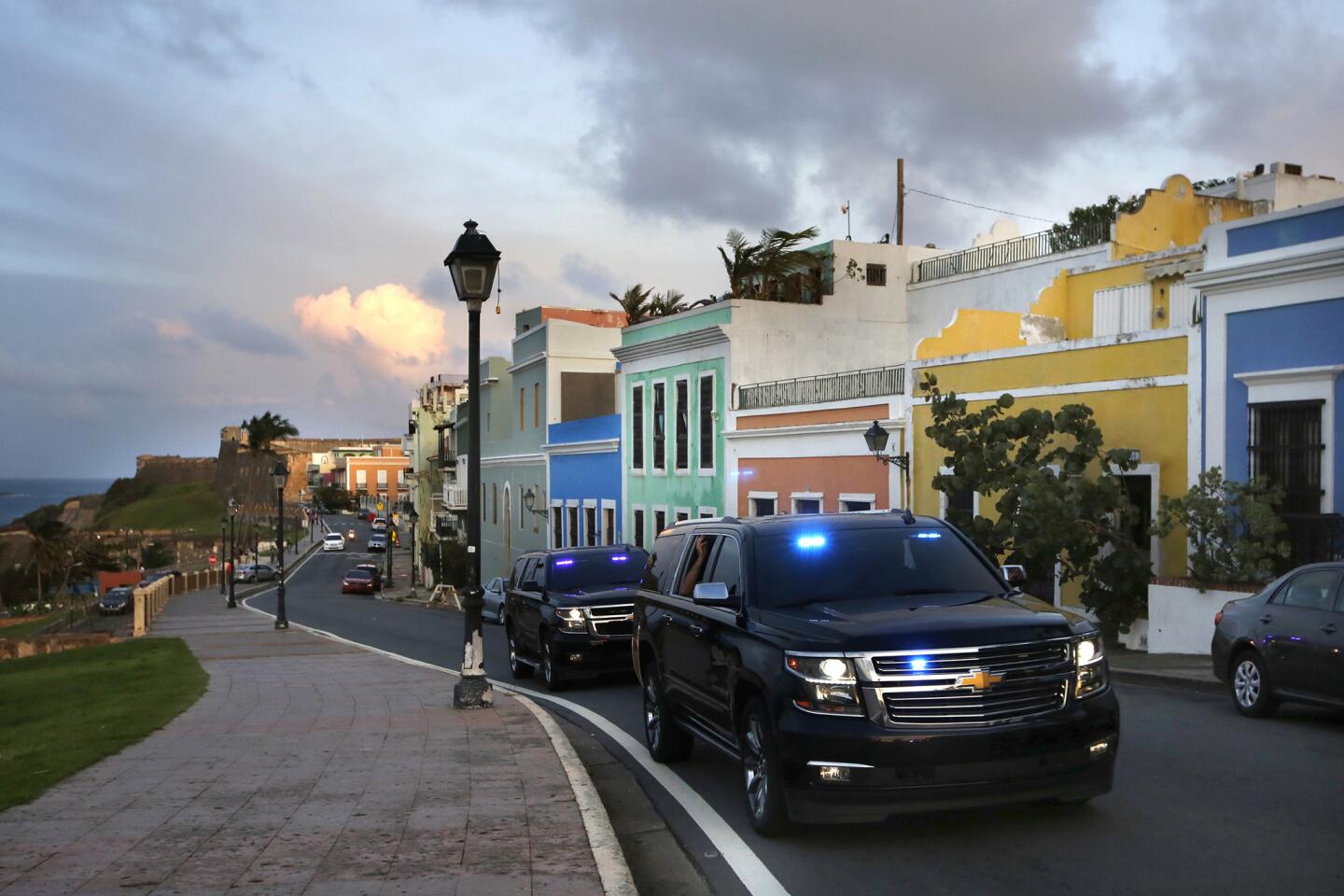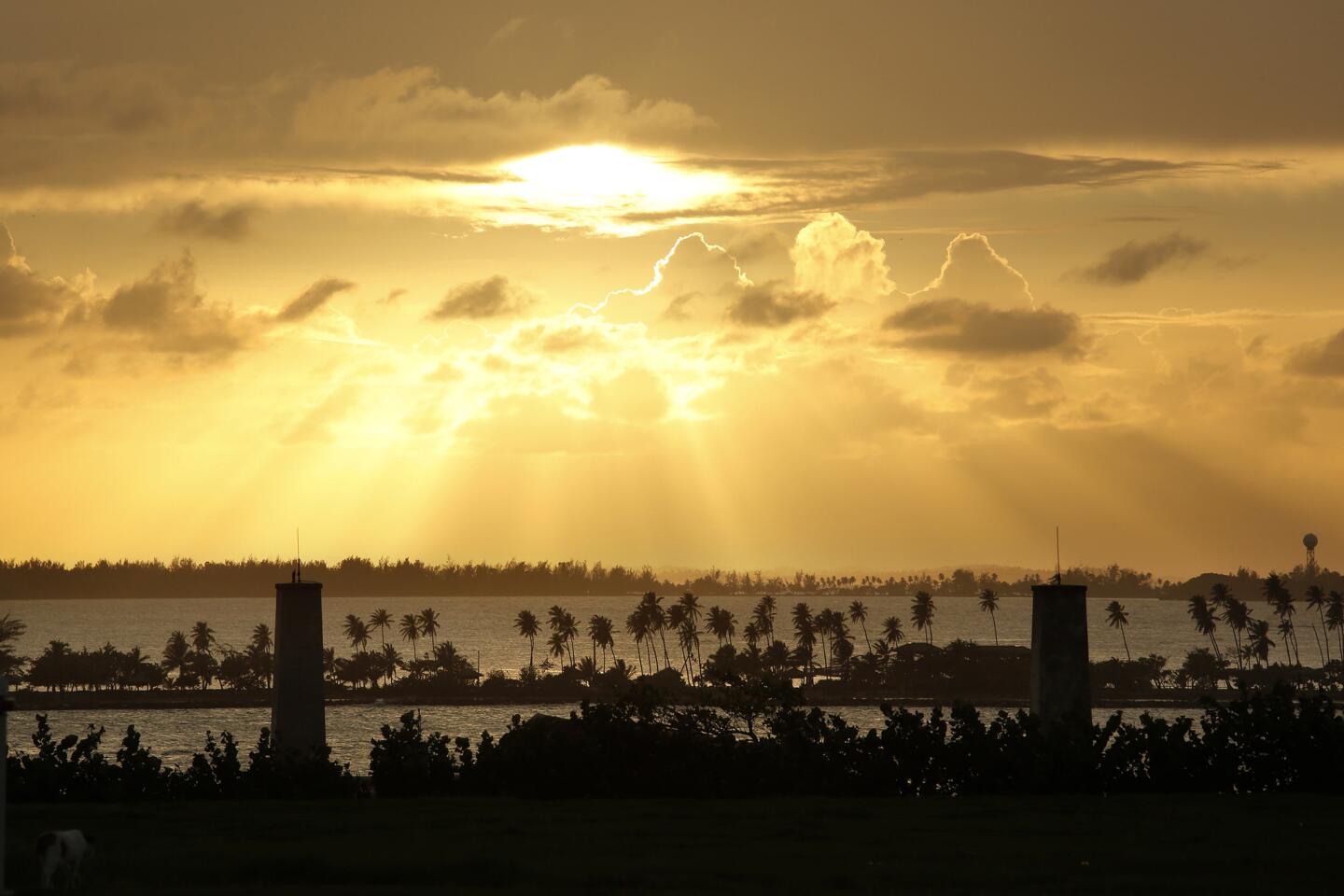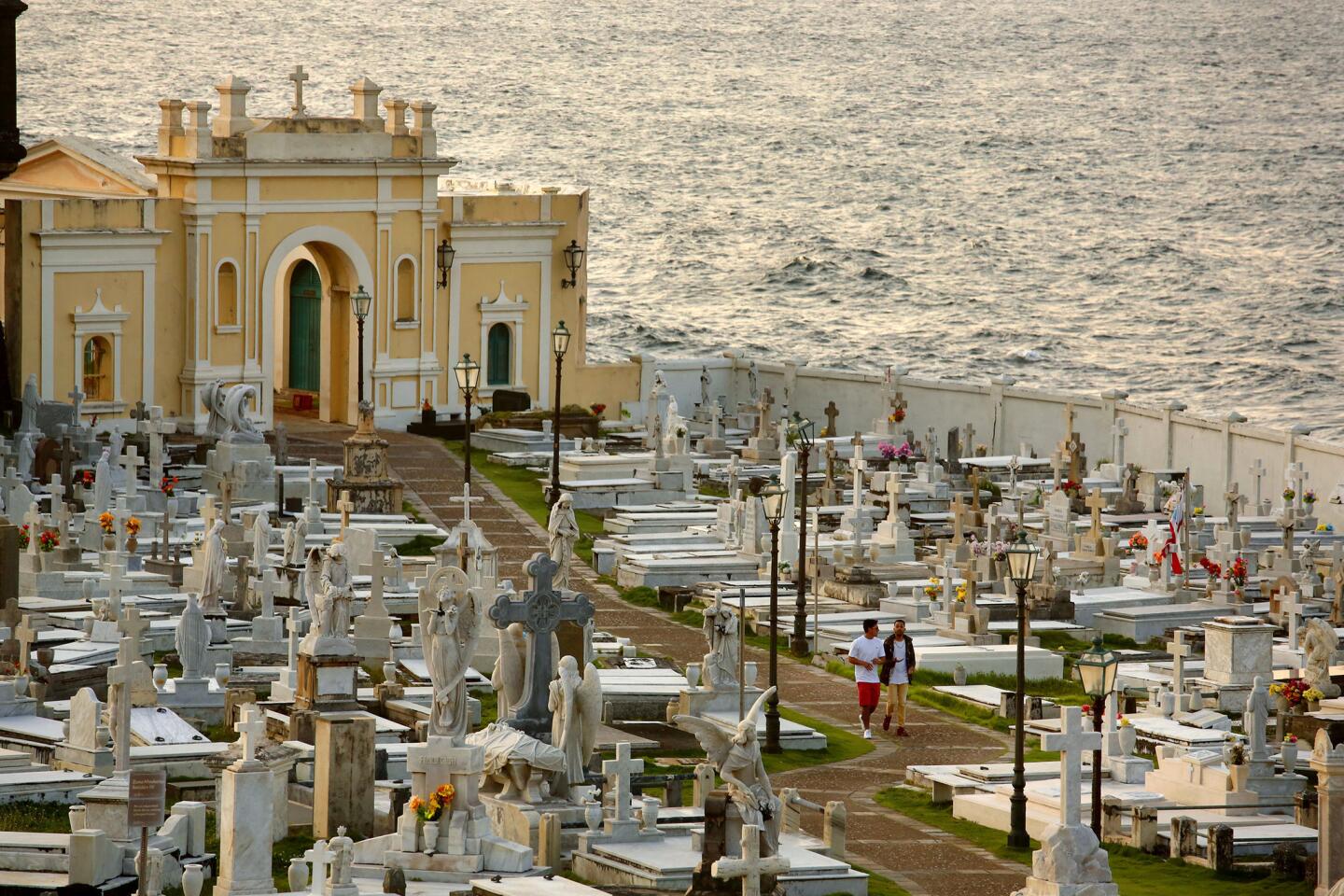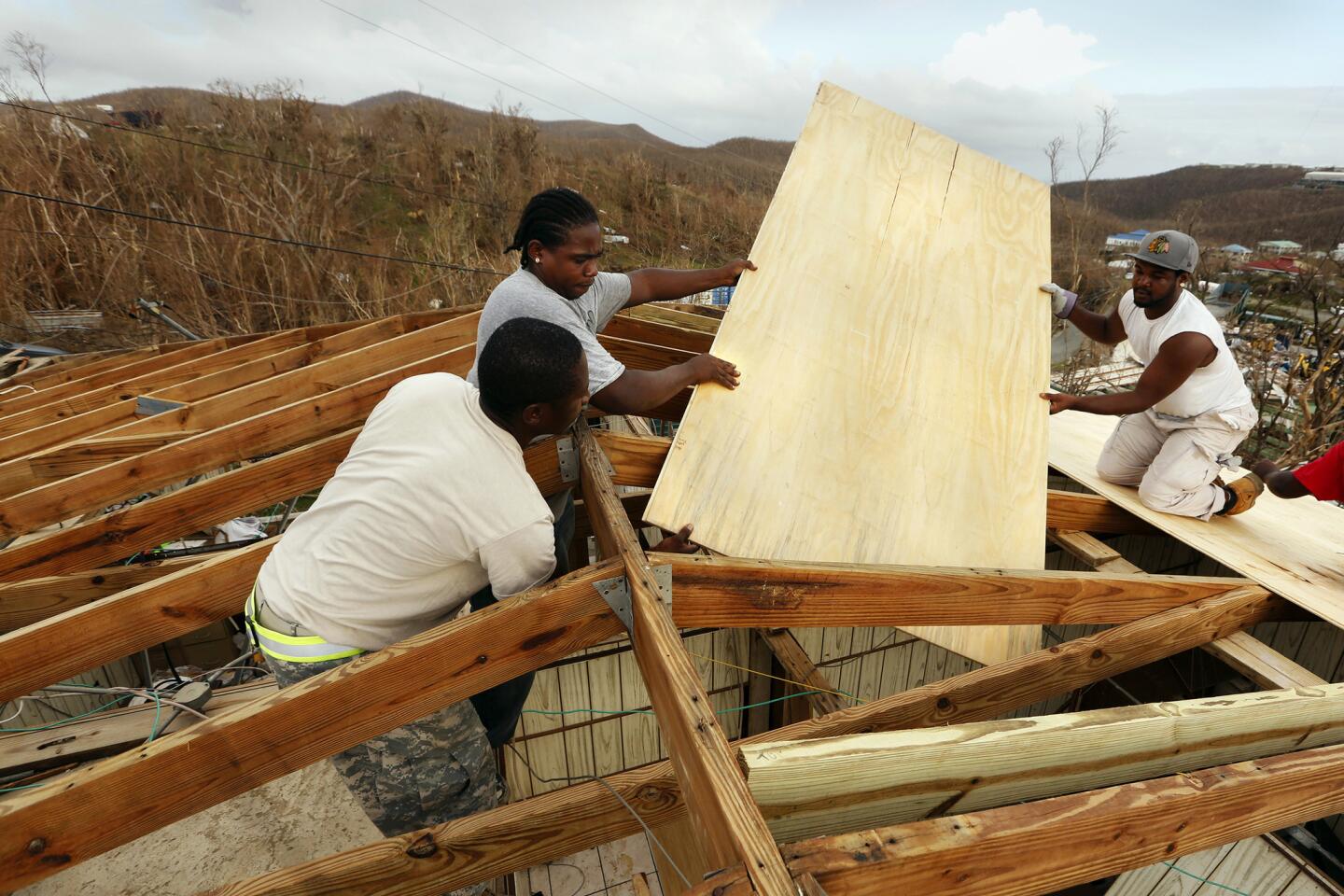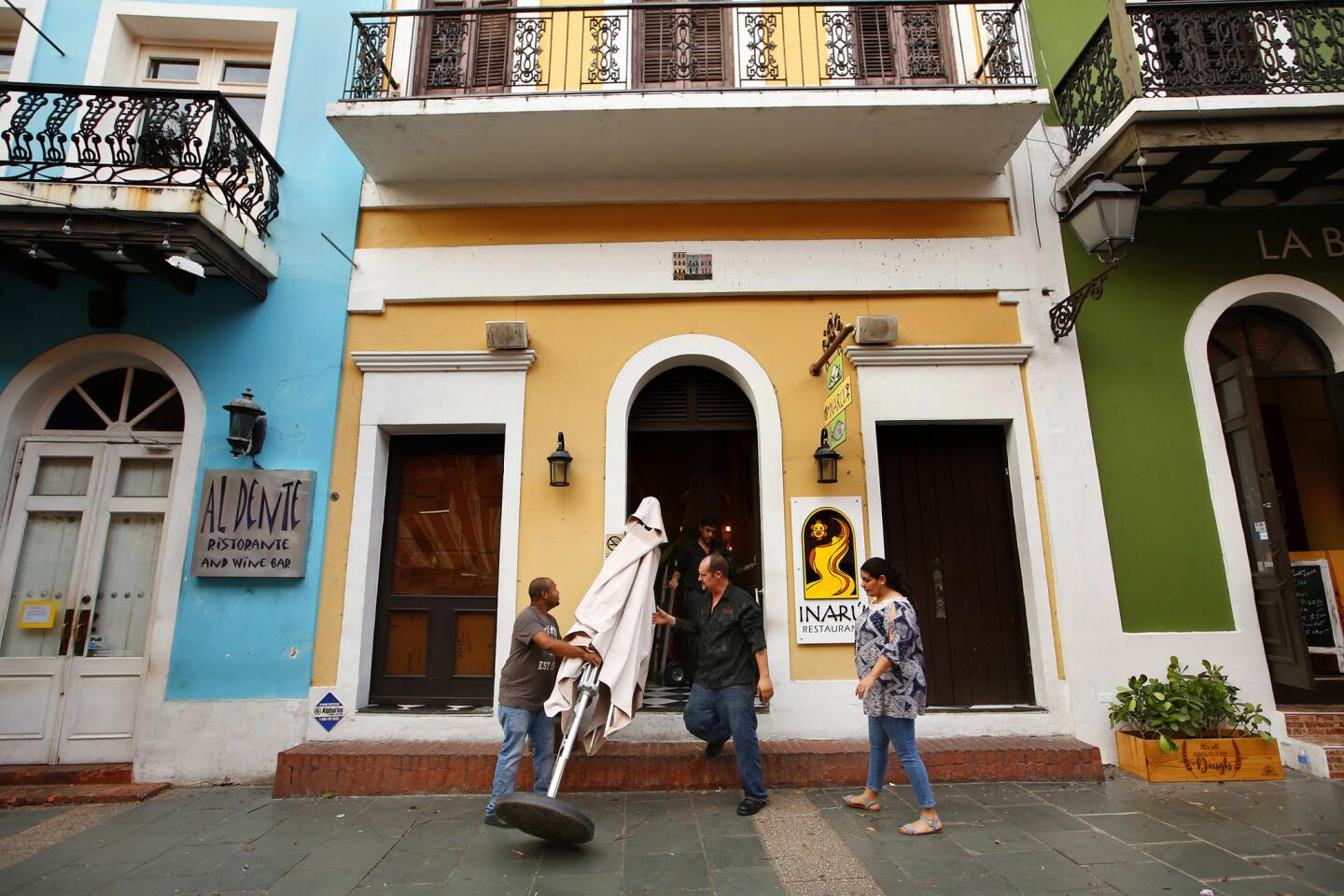Failing dam in Puerto Rico triggers evacuations in Maria’s wake as death toll is expected to climb
- Share via
Reporting from SAN JUAN, PUERTO RICO — The arrival of Hurricane Maria brought cratered homes and downed power lines, flooded streets and communities forever changed. Now, as the strongest storm to hit Puerto Rico in decades continues to churn in the Atlantic Ocean, officials must grapple with another, grim task: counting the dead.
On Friday, rescue efforts were ongoing in Puerto Rico as authorities warned that the death toll would probably increase as flooding continues to affect large portions of the island. The situation became even more dire Friday afternoon when authorities warned that the Guajataca Dam, in the northwestern part of the island, was in “imminent” danger of failure. Thousands were ordered to evacuate immediately.
With most radio, television and cellphone towers down, communication remains difficult, if not impossible, on parts of the island, and officials struggled to assess the damage, let alone render aid.
At least six people were killed in the U.S. territory as a result of Maria, said Hector M. Pesquera, secretary of the Puerto Rico Department of Public Safety.
In Utuado, a town about 65 miles west of the capital of San Juan, three people died in a landslide. Three more people were killed as a result of floods and falling debris in the San Juan suburbs.
“These are fatalities we know of,” Pesquera said. “We know of other potential fatalities through unofficial channels that we haven’t been able to confirm.”
The National Weather Service said the Guajataca Dam was failing Friday afternoon.
“All Areas surrounding the Guajataca River should evacuate NOW,” the weather service said on social media. “Their lives are in DANGER! Please SHARE!”
For several days, Maria has pummeled the Caribbean, leaving a deadly trail and recovery efforts that will last several months.
On Friday, Maria began to pass northeast of the Turks and Caicos Islands as a Category 3 storm. A hurricane warning remained in effect for those islands as well as for the southeastern Bahamas. The storm is expected to veer into the open Atlantic Ocean and pose no threat to the U.S. mainland.
Prior to the storm’s arrival here on Wednesday, it had already killed at least 15 on the island of Dominica. Two more were killed on the island of Guadeloupe, and one in the U.S. Virgin Islands.
Though the eye of Maria has passed Puerto Rico, heavy rains continue to blanket portions of the island.
In San Juan, businesses remained shuttered. Roads were blocked by high water and downed trees. Whole blocks were still submerged. The island was already facing an economic crisis before the storm, and many victims expected the recovery to be slow, especially the electrical grid.
Some communities have been hit by looters, and officials have imposed an overnight curfew through Saturday.
In a statement, Ajit Pai, chairman of the Federal Communications Commission, said that “over 95% of Puerto Rico’s wireless cell sites are currently out of service.”
“Unfortunately, getting Puerto Rico’s communications networks up and running will be a challenging process, particularly given the power outages throughout the island,” he said.
U.S. utility crews from the mainland were headed to Puerto Rico to help restore power. The U.S. military sent staffers and aircraft to assist with search and rescue.
Federal Emergency Management Agency Press Secretary Paul McKellips said nearly 3,700 federal staffers are in Puerto Rico to help with recovery efforts. They already were on the island ahead of the storm’s arrival on Wednesday, helping with recovery efforts after Hurricane Irma hammered the Caribbean last week.
Several airports, McKellips said, including in San Juan, have been opened on the island to support limited flights bringing in food and water along with additional personnel.
“The top priority of the federal government is to provide life-saving resources,” he said.
In recent weeks, it’s been an active hurricane season. Hurricane Irma, a record-breaking powerful storm, killed at least 84 people in the Caribbean and on the U.S. mainland, and arrived on the heels of Hurricane Harvey, which killed more than 80 people in Texas last month.
Puerto Rico was already reeling from Irma, which passed the northern coast of the island last week as a Category 5 hurricane. Though Puerto Rico escaped a direct hit, the storm inflicted major damage on the electrical grid, and portions of the island had been without power even before Maria struck.
Recovery efforts were also underway Friday elsewhere in the Caribbean.
U.S. Virgin Islands Gov. Kenneth Mapp expressed relief that Maria had skirted the island of St. Croix.
About 600 people had taken cover in emergency shelters and heeded a government-imposed a curfew, Mapp said.
“Given the amount of roofs blown off and scattered debris, you hunkered down and you hunkered down well,” he said. “It’s going to be a long road to recovery.”
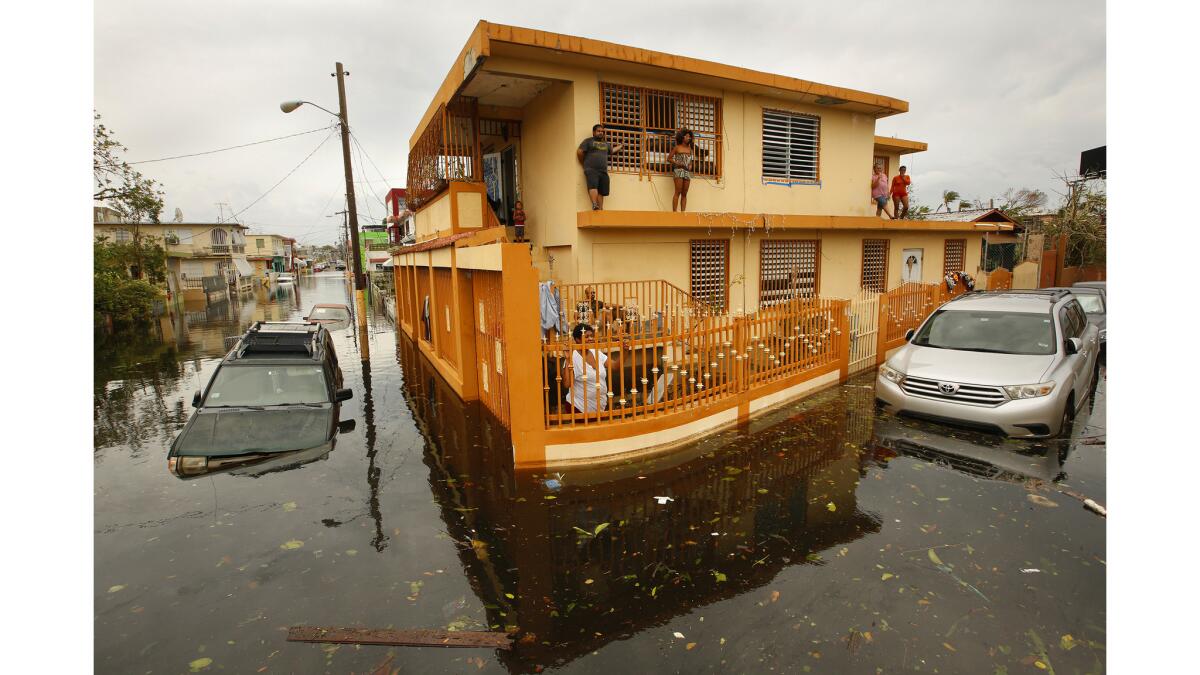
In Puerto Rico, Maria’s aftermath brought as much as 40 inches of rain to some areas, and an island-wide flash-flood watch remained in effect Friday.
At the Guajataca Dam, officials called for residents of towns in the municipalities of Isabela and Quebradillas to evacuate as the structure began to fail. The dam was created for public and irrigation water supplies.
Additional assistance from the U.S. mainland arrived in Puerto Rico on Friday to help out in the wake of Maria.
New York Gov. Andrew Cuomo traveled to the island along with several members of New York’s congressional delegation.
Cuomo, who inspected the damage from a helicopter with Puerto Rico Gov. Ricardo Rossello, said that in the days ahead he will dispatch 240 members of the state’s National Guard and highway patrol to the island to help with recovery. Last week, Cuomo visited the U.S. Virgin Islands reeling in the wake of Irma.
The New York Power Authority is also sending a crew of 10 personnel, including translators, supervisors and engineers, along with drones to assist with the assessment and reconstruction of the commonwealth’s power grid.
“Puerto Rico is part of the New York family, and we stand with our Puerto Rican brothers and sisters as they begin to rebuild,” Cuomo said.
Twitter: @mollyhf
Twitter: @kurtisalee
Hennessy-Fiske reported from San Juan and Lee from Los Angeles.
ALSO
‘Total destruction’ in Puerto Rico after Hurricane Maria, and more rain is on the way
Here’s what earthquake magnitudes mean—and why an 8 can be so much scarier than a 6
Mexicans aren’t counting on the government to rescue them. They’re saving themselves
UPDATES:
3:50 p.m.: This article was updated with comments from Paul McKellips and Andrew Cuomo.
12:30 p.m.: This article was updated to report a failing dam.
11:20 a.m.: This article was updated with additional storm damage and comments from Hector M. Pesquera, , secretary of the Puerto Rico Department of Public Safety.
This article was originally published at 6:40 a.m.
More to Read
Sign up for Essential California
The most important California stories and recommendations in your inbox every morning.
You may occasionally receive promotional content from the Los Angeles Times.

